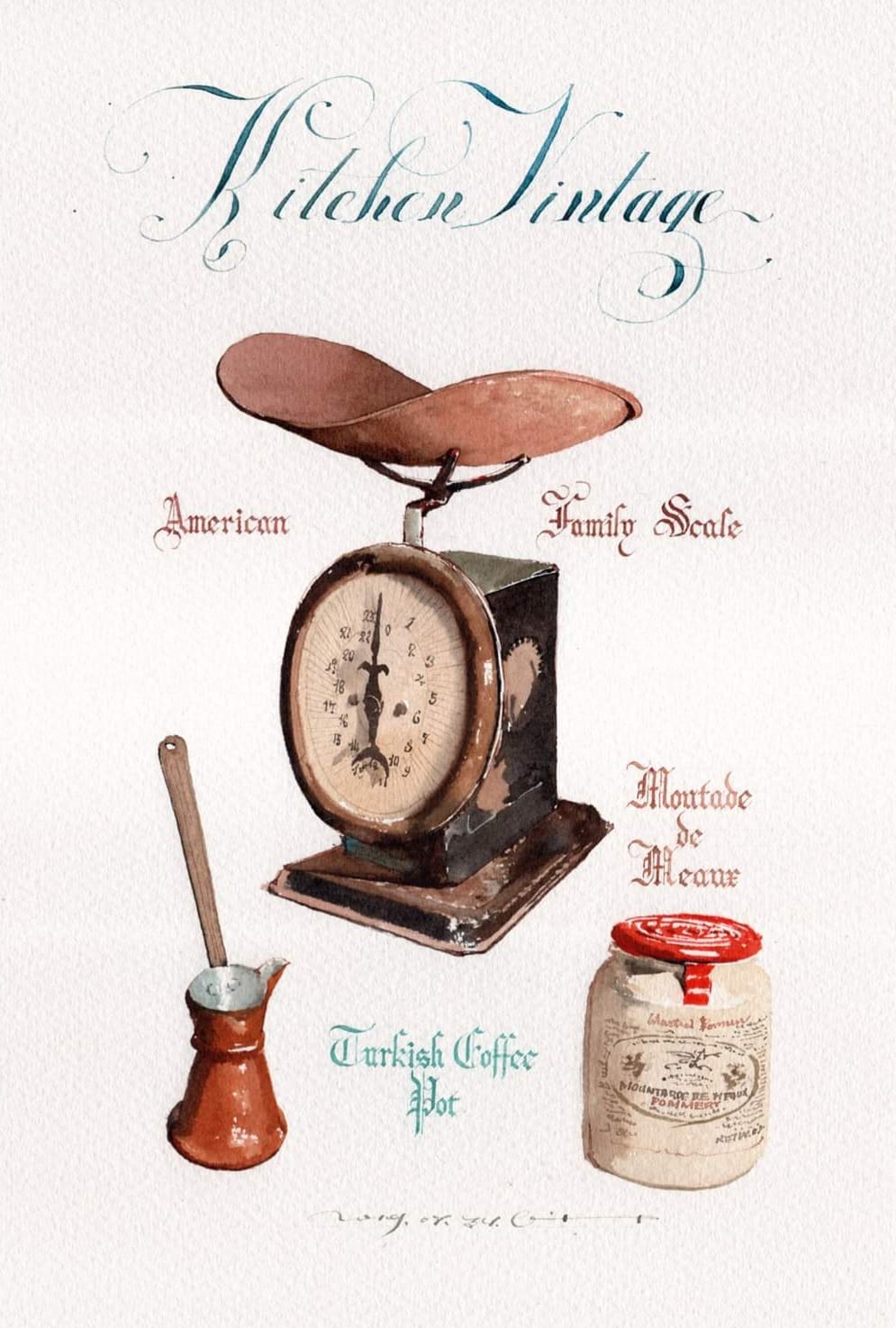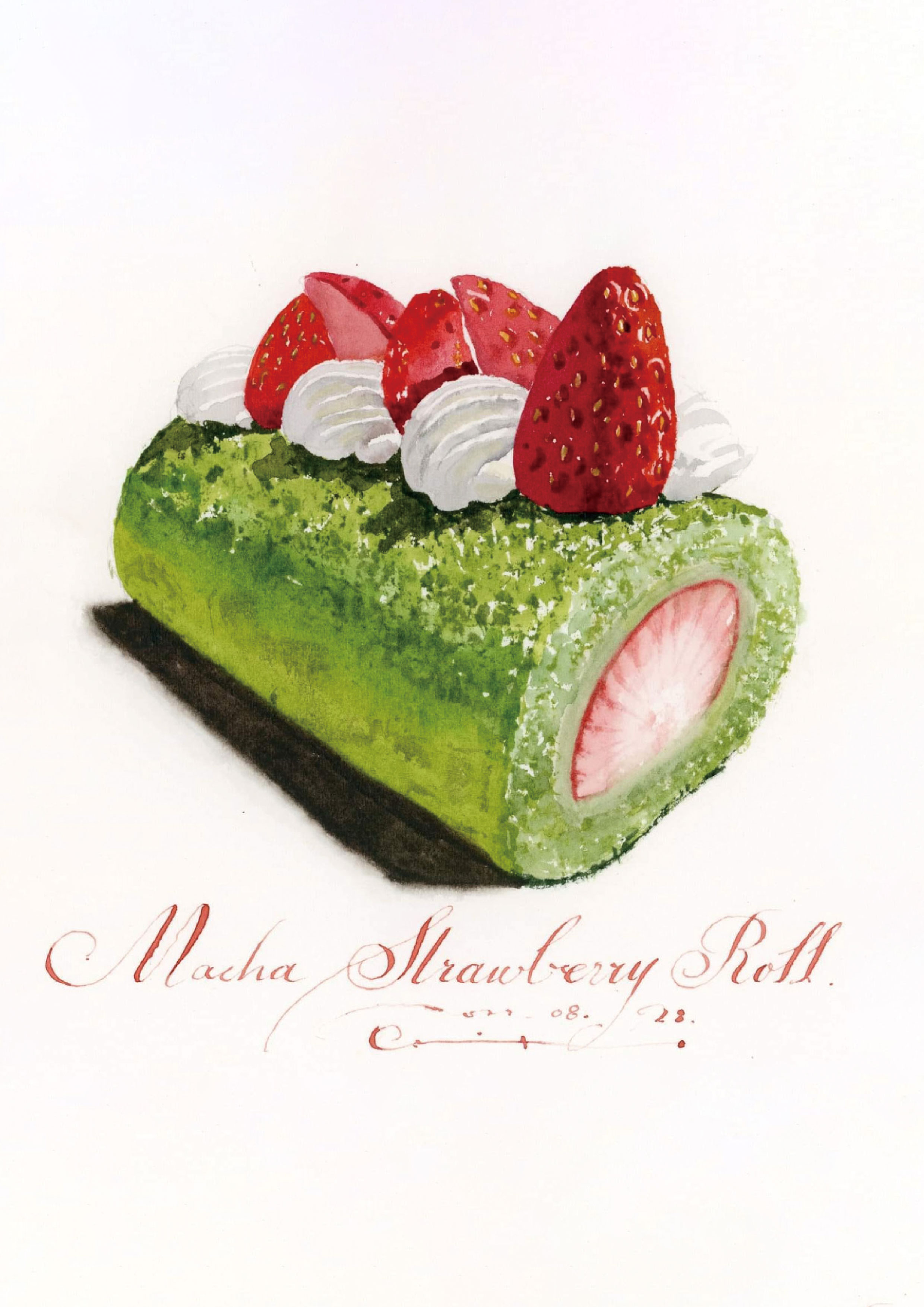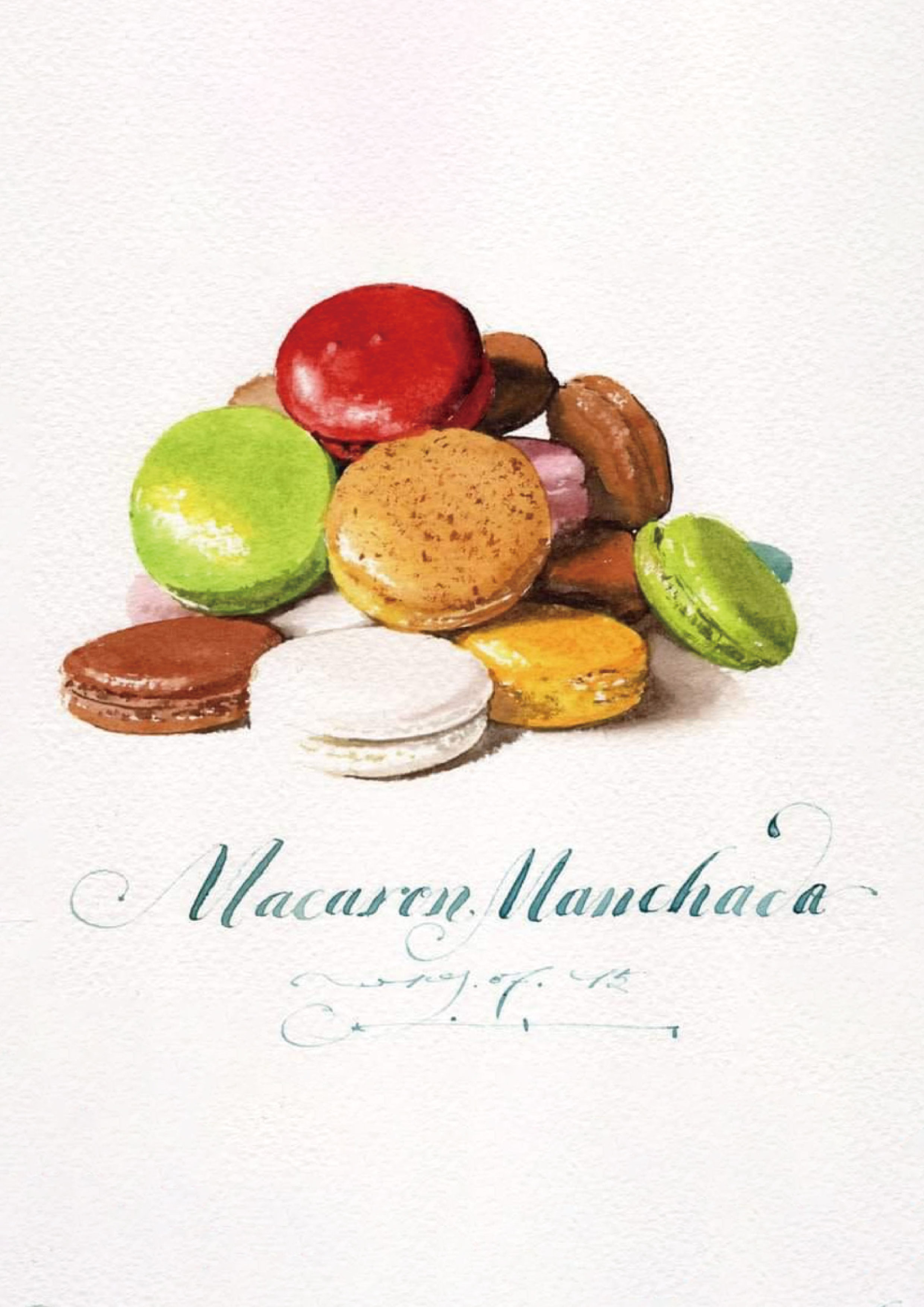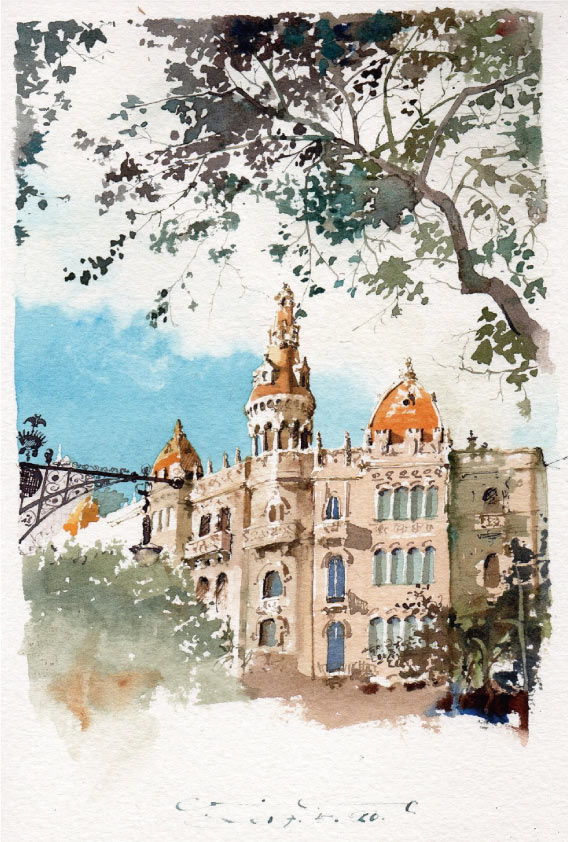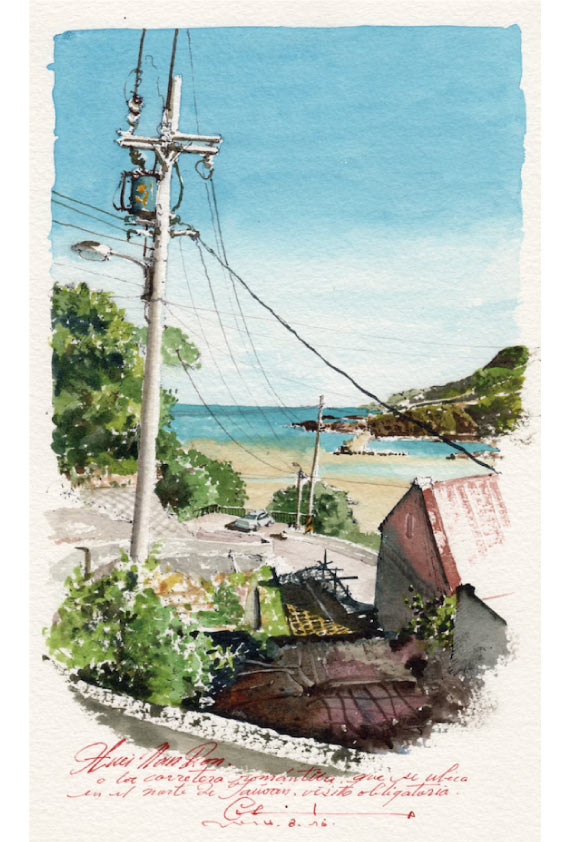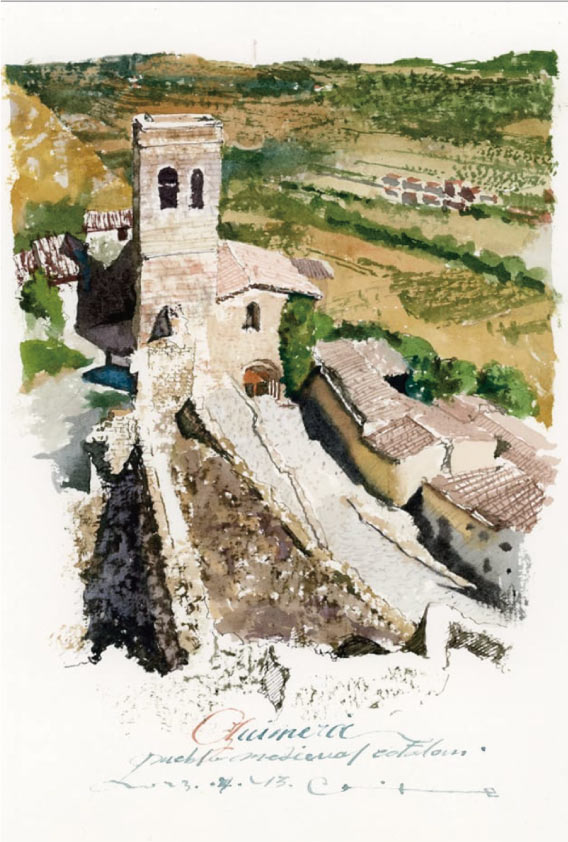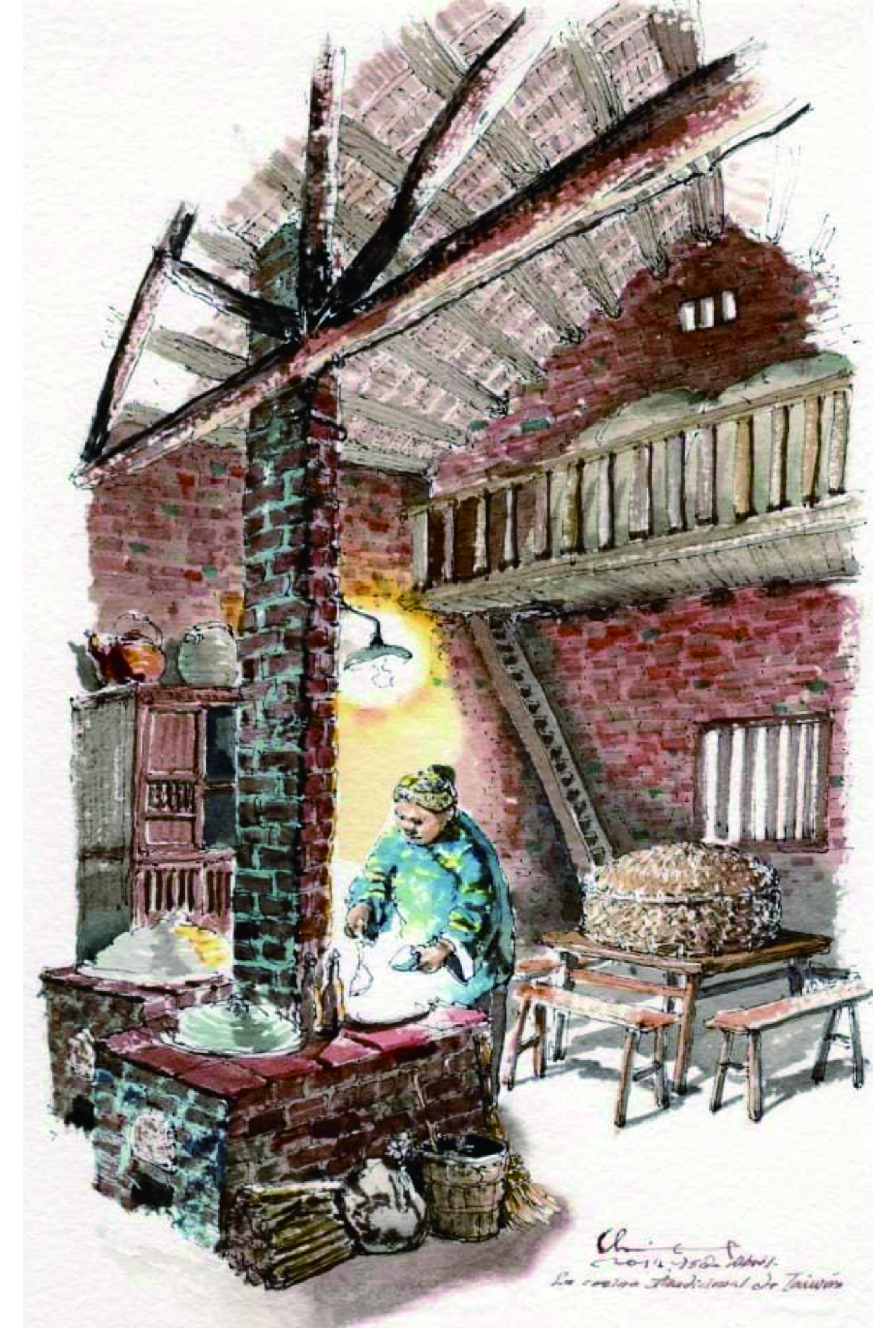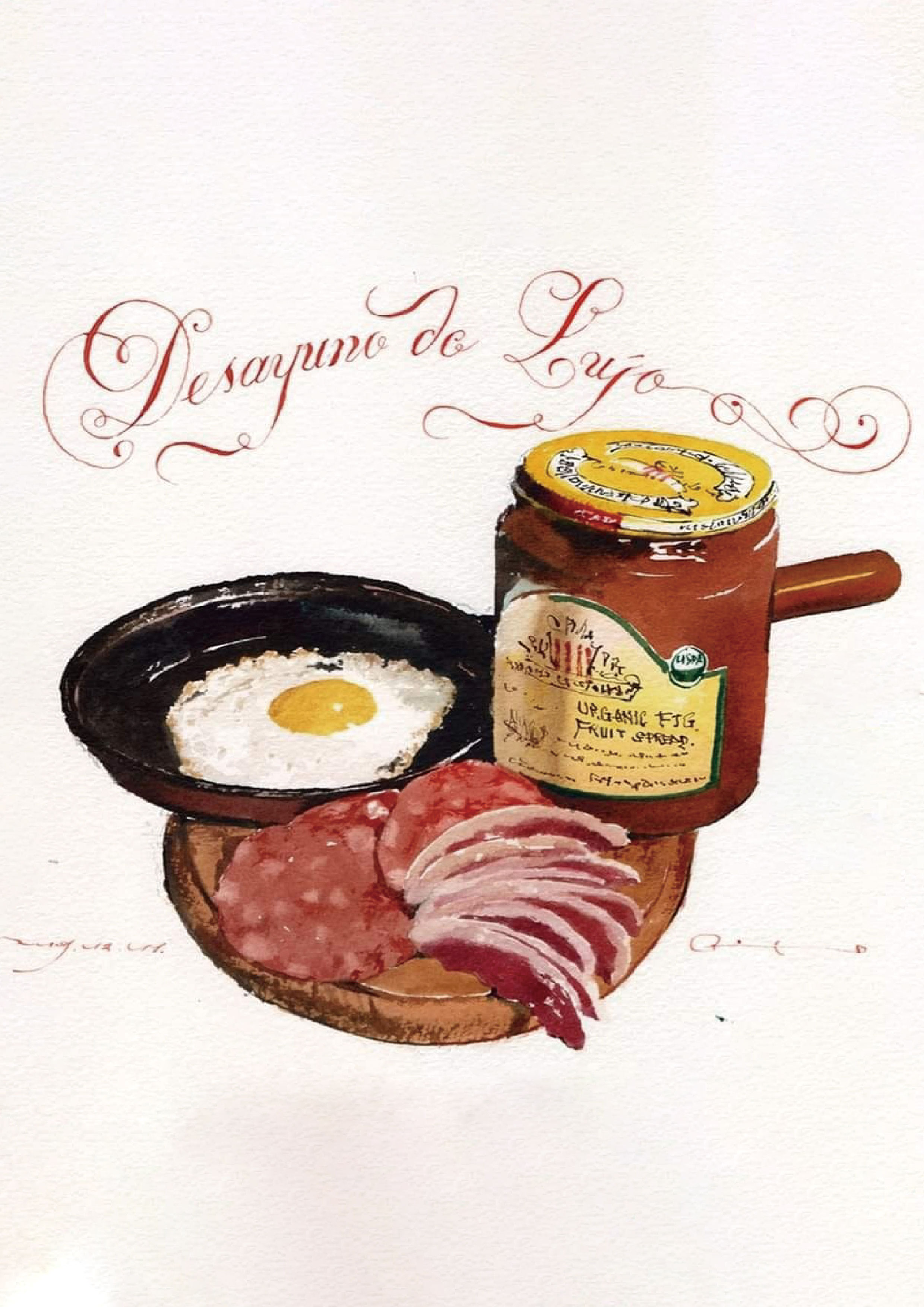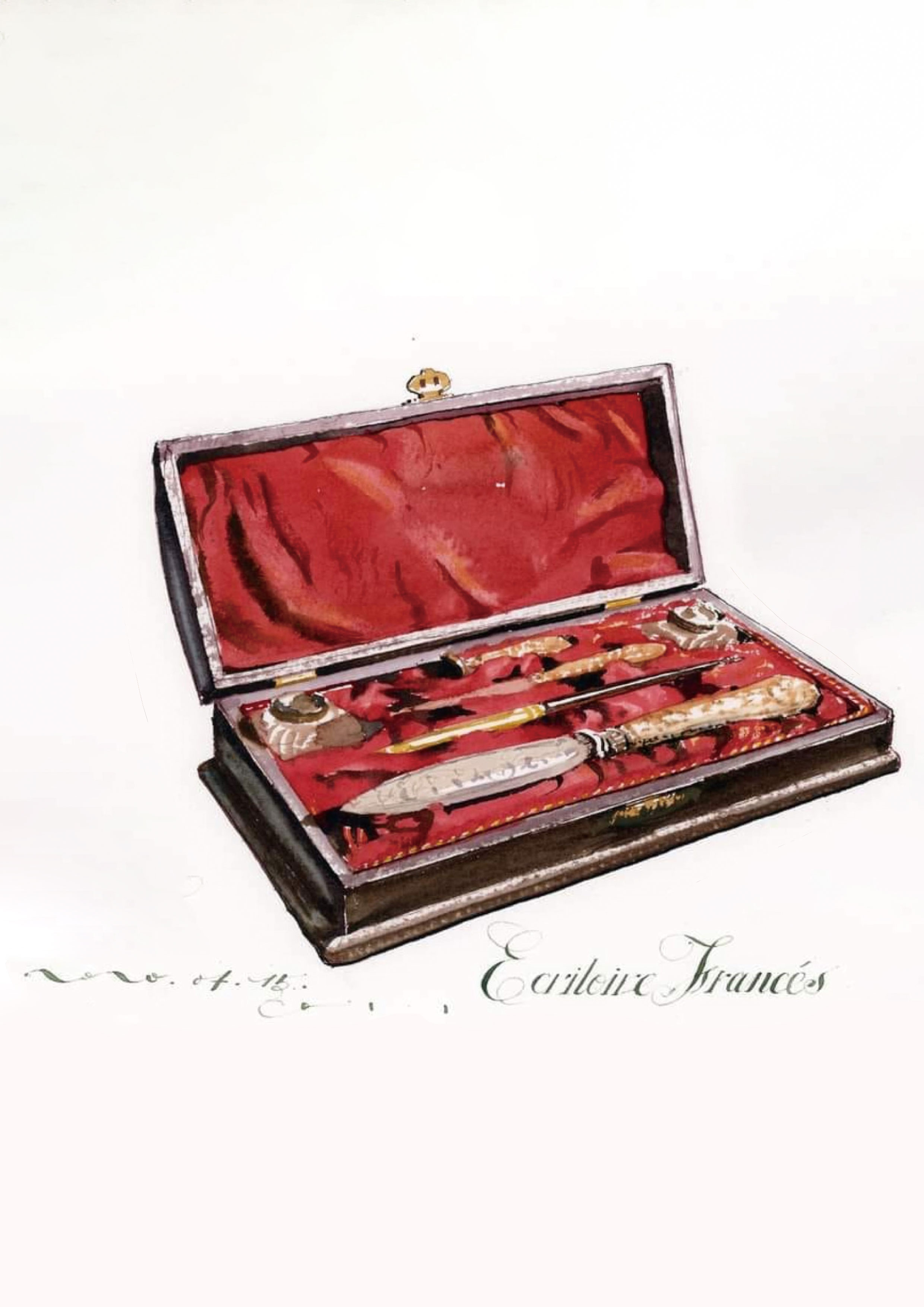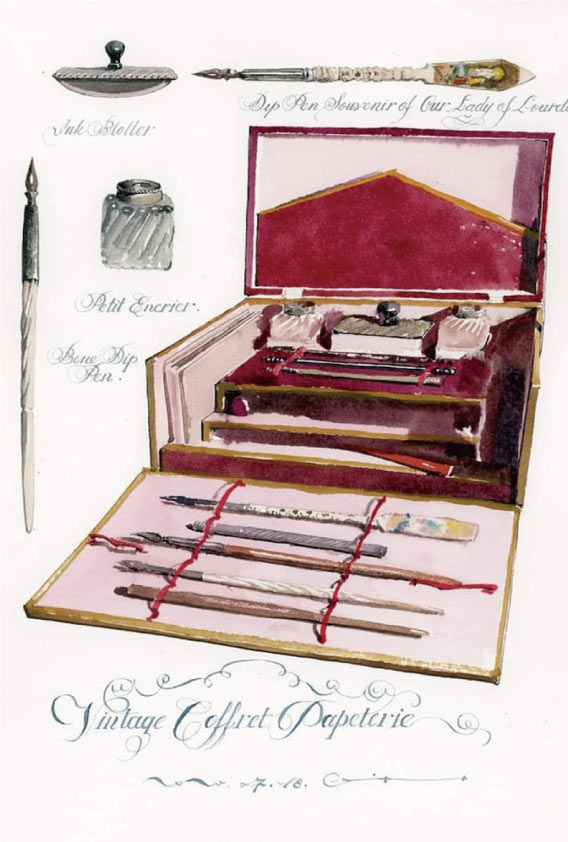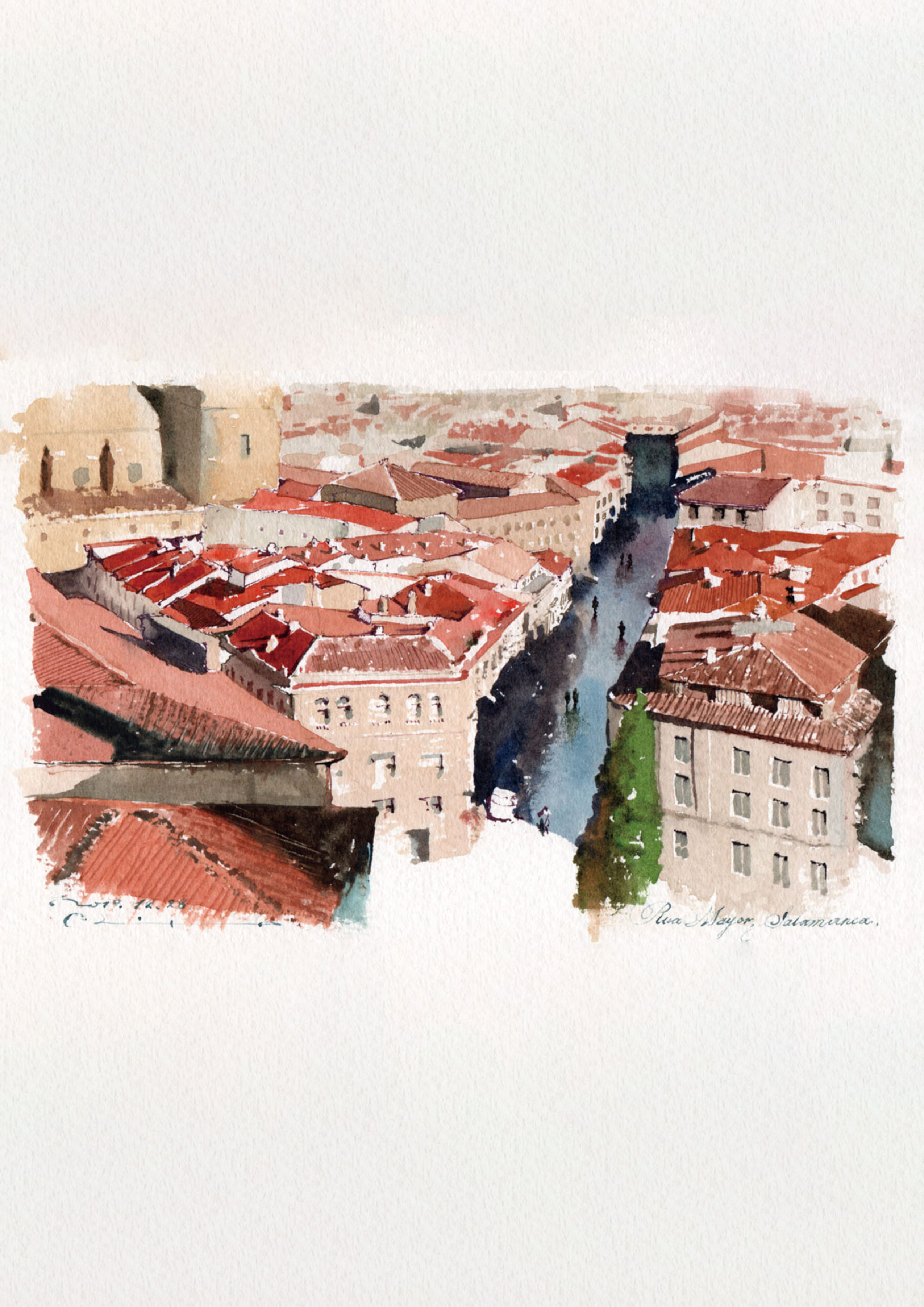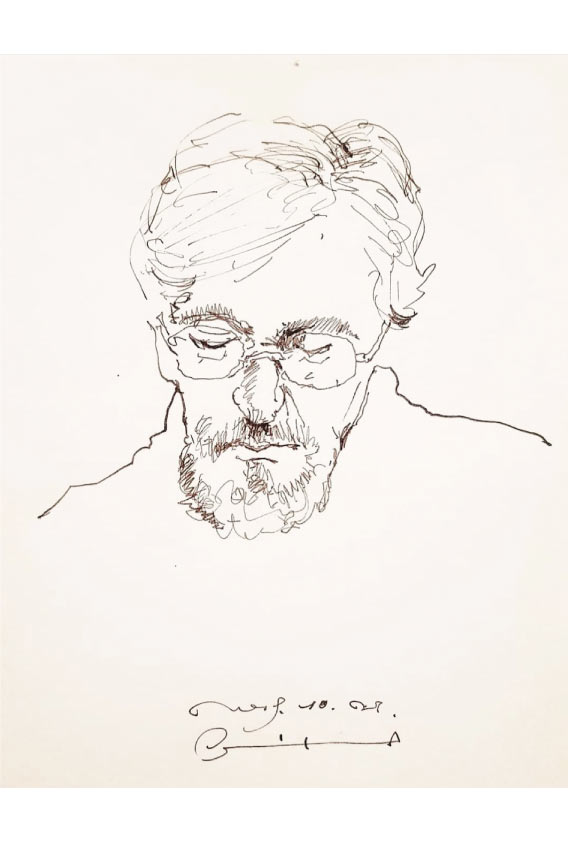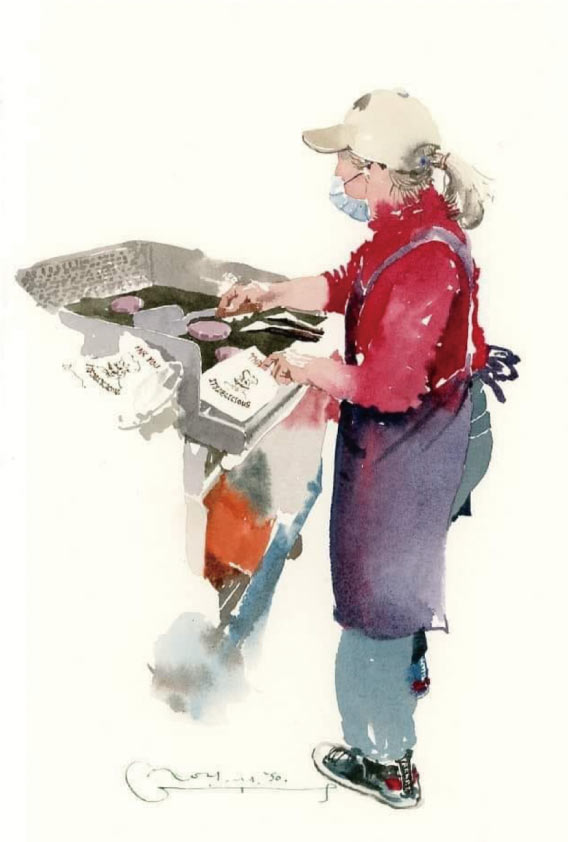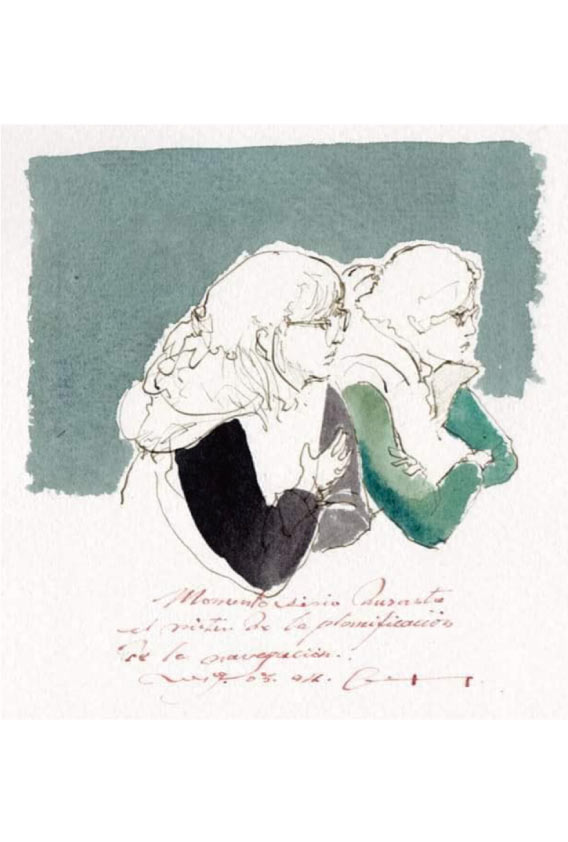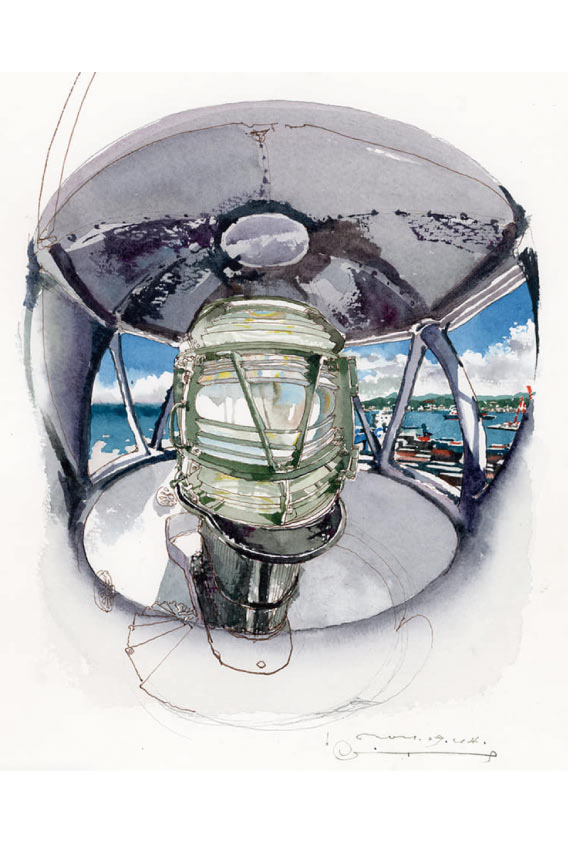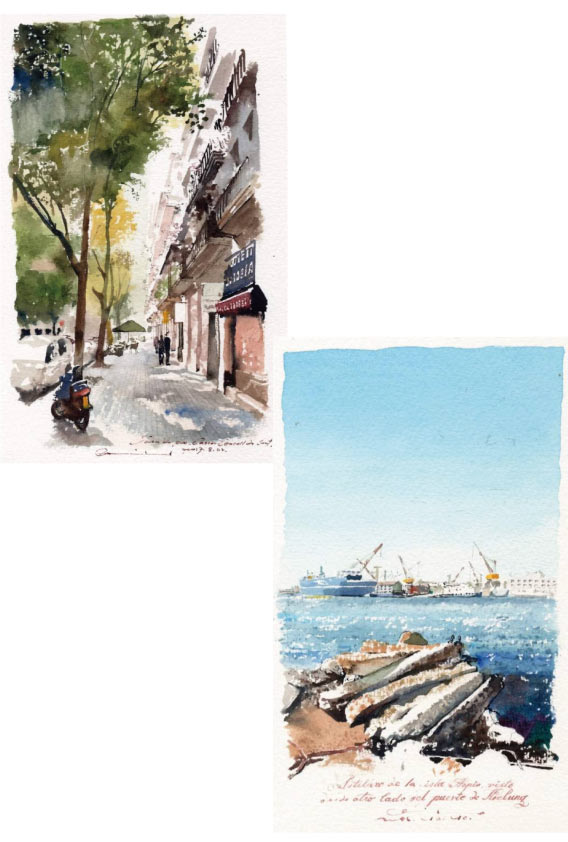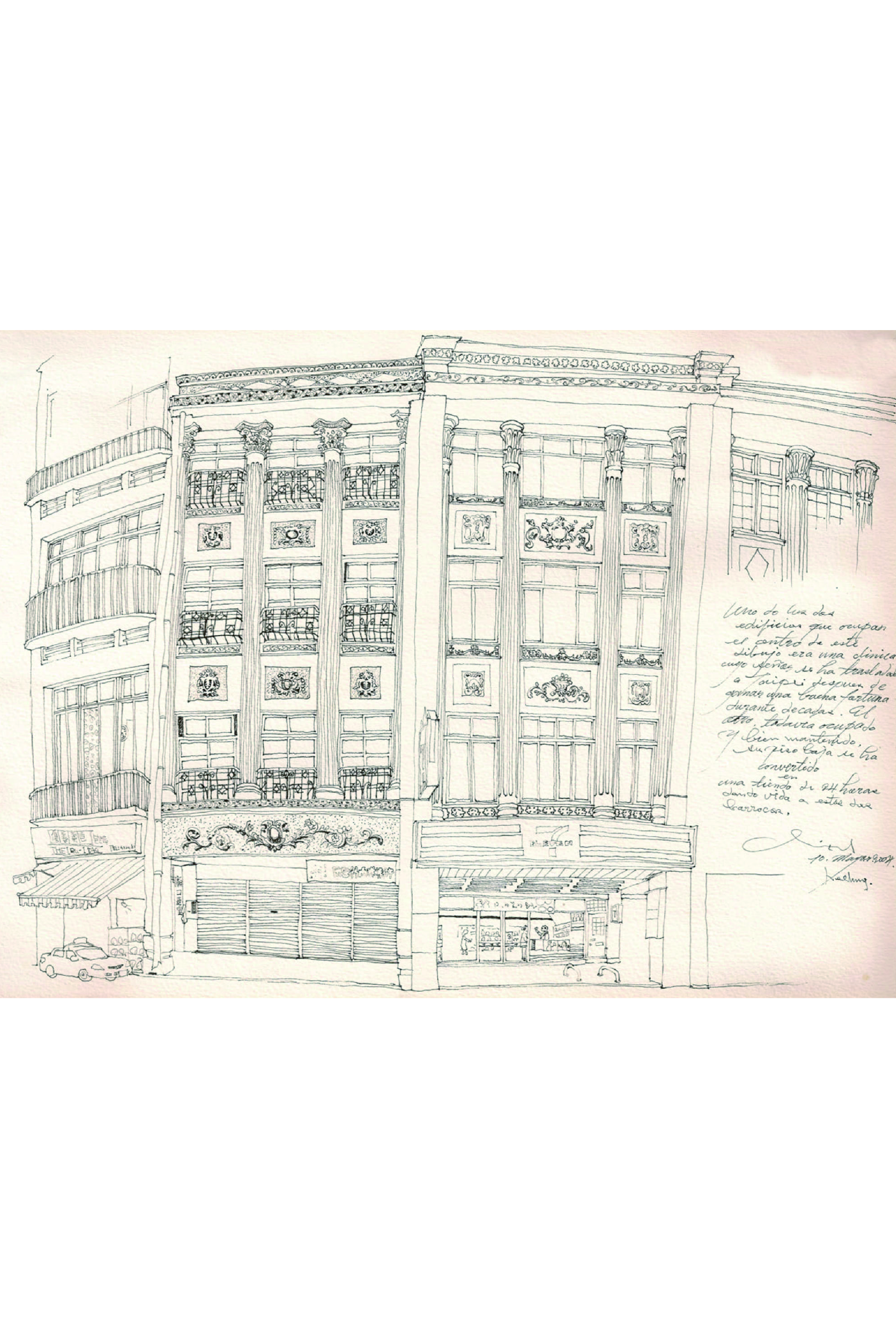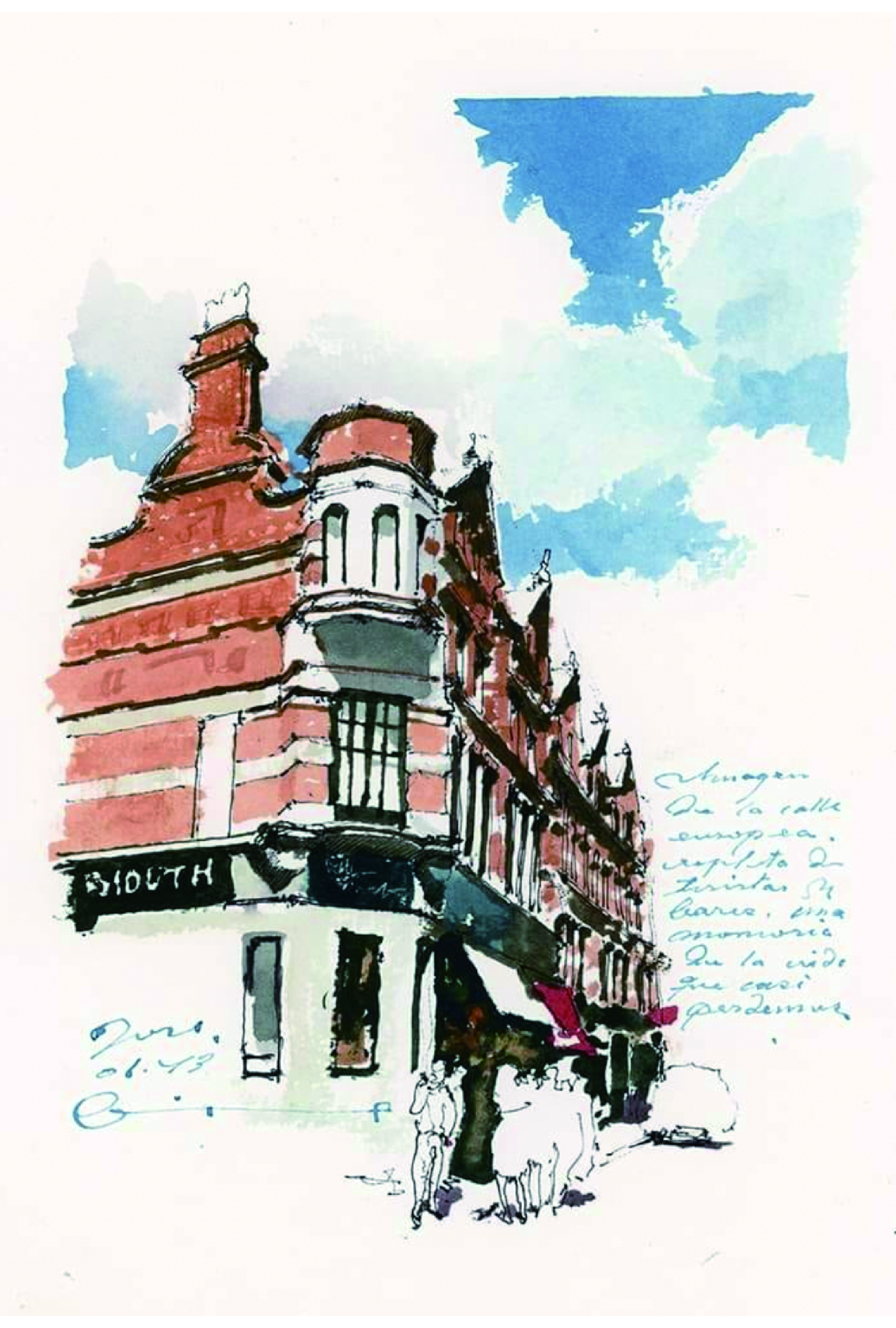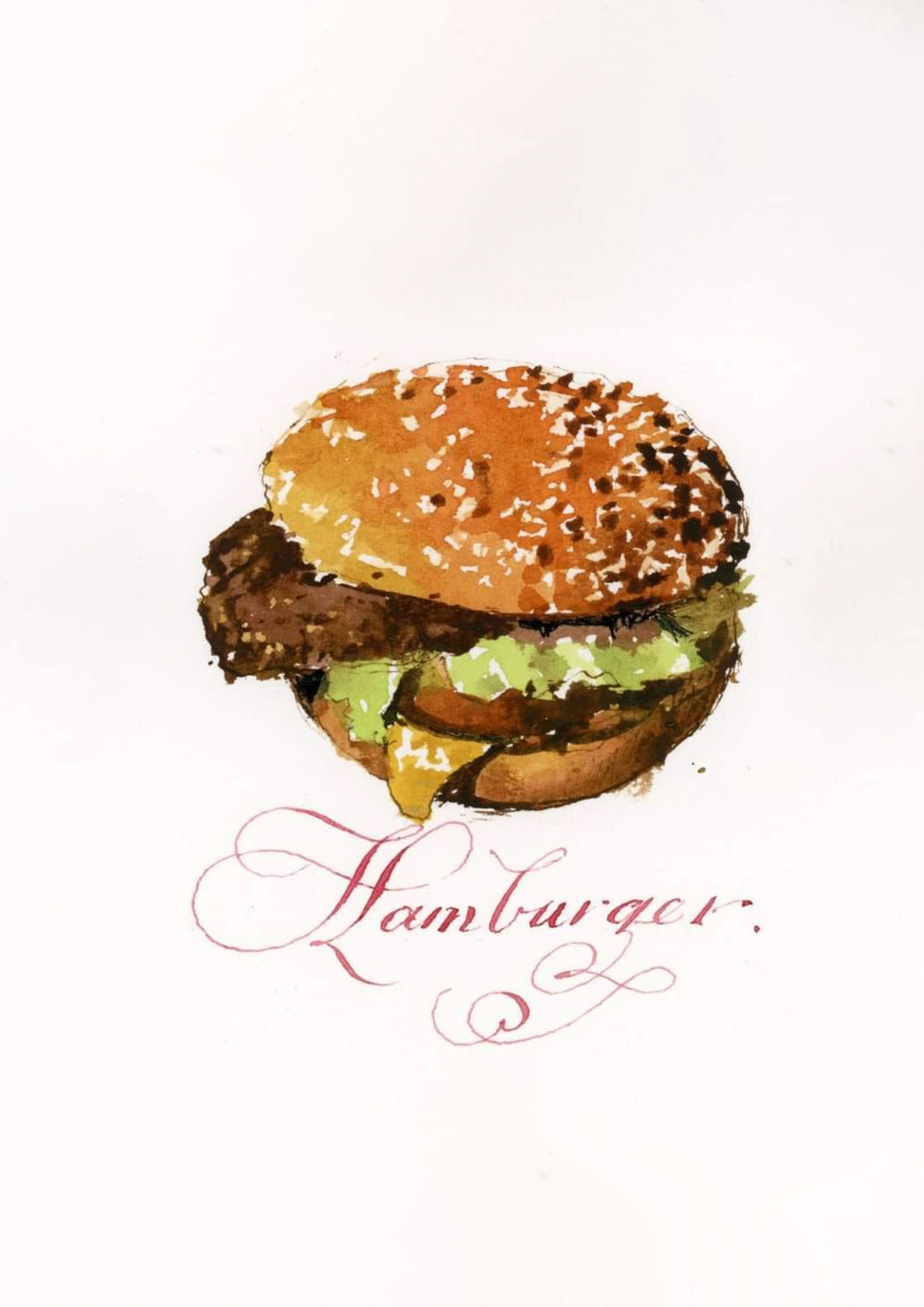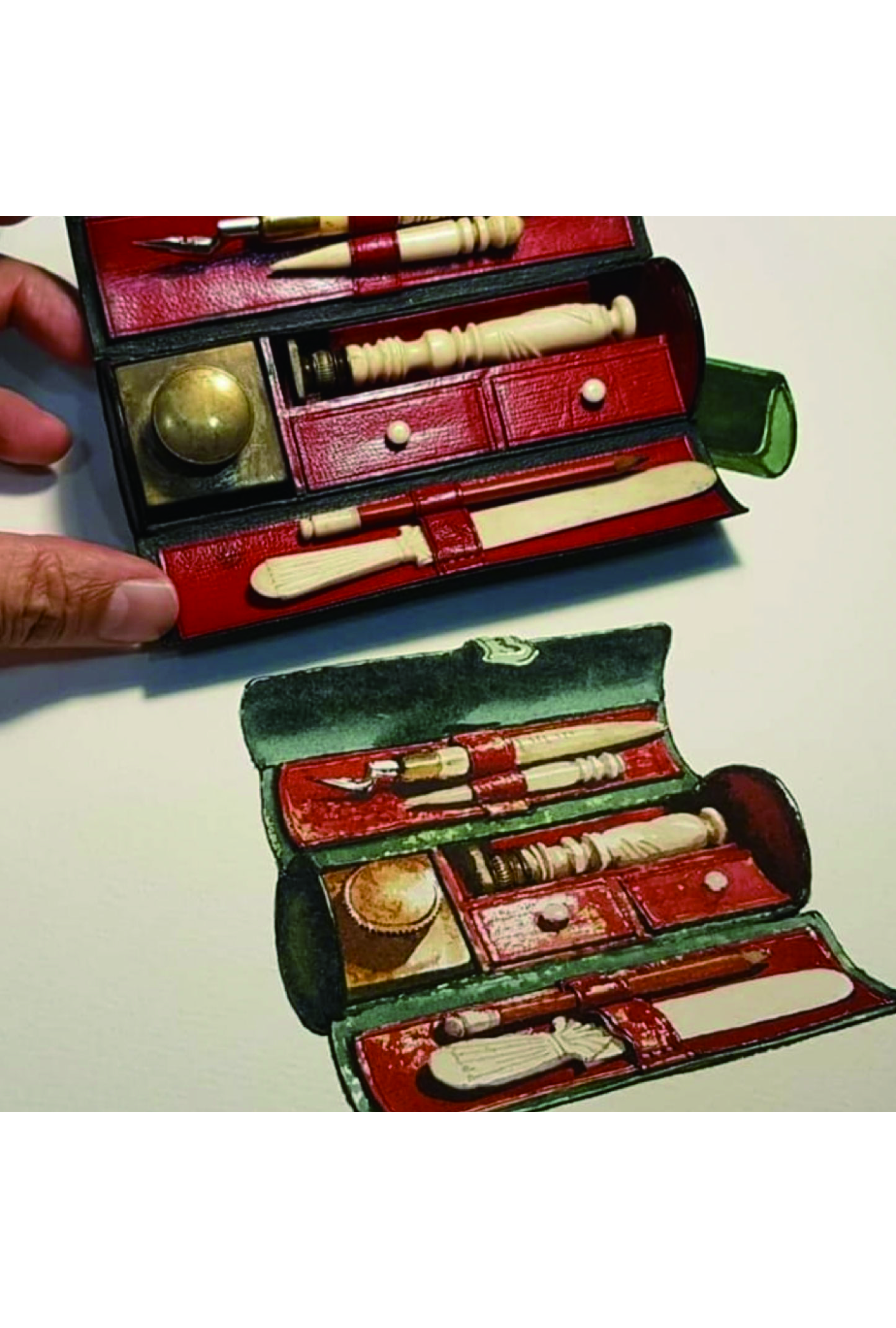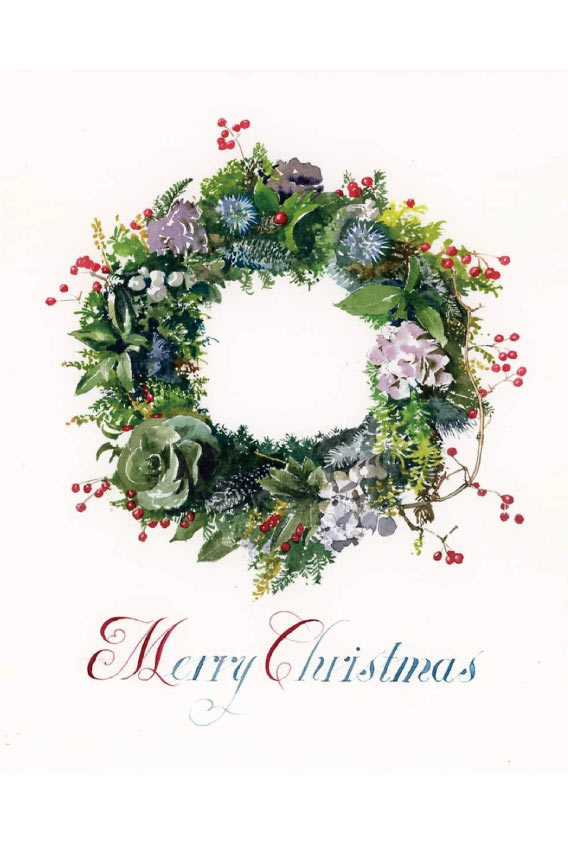王傑課程系列|西班牙藝術之旅
Art is the embodiment of emotions, transcending the mere act of painting.
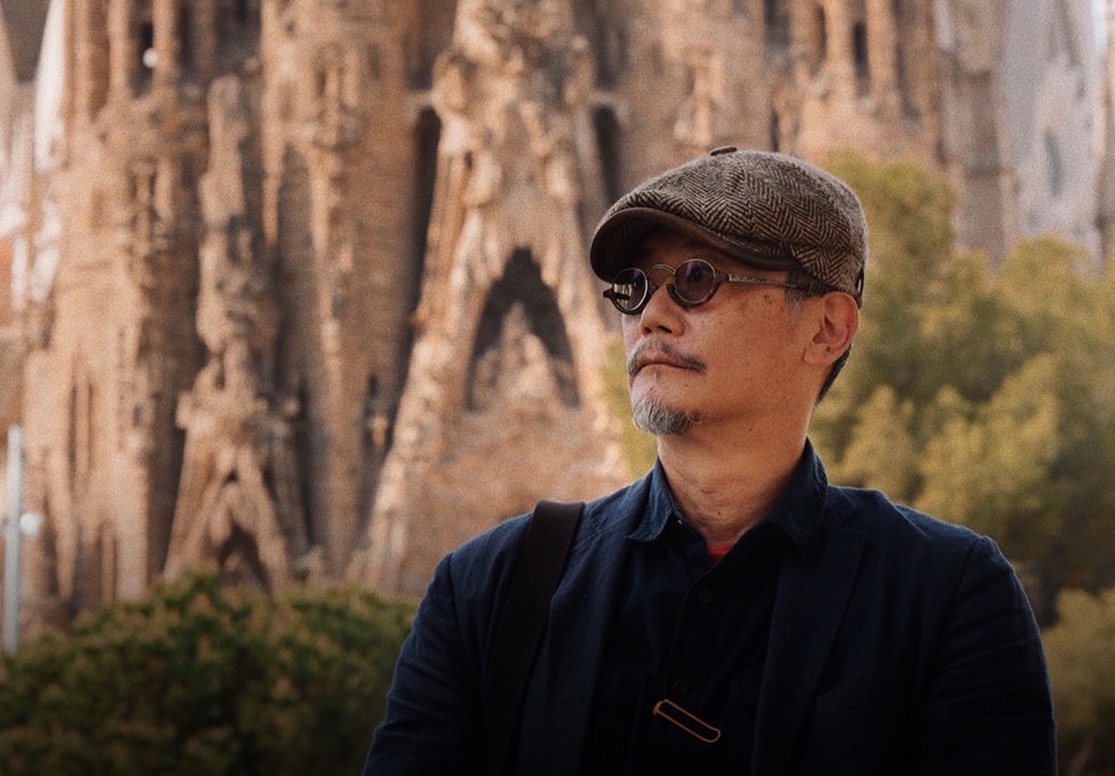
International Master Artist -
Wang Jie
Wang Jie, who obtained a Doctorate in Fine Arts from the University of Barcelona in Spain, returned to Taiwan in 2003 and began capturing the people and scenes of his hometown, Keelung, with his unique style of watercolor paintings. His works, such as "Hand-drawn Moments in Spain" and "Painter's Guide: A Journey through Keelung," have received great acclaim. Not only can Keelung residents see his public artwork at the reconstructed site of Qiudukou Old Train Station, but his "Lives in the windows" Microsoft advertising campaign was also the only Taiwanese entry selected at the Cannes Lions International Festival of Creativity in France. It has also been awarded the Drawing category prize at the New York Advertising Awards and the Golden Award at the Times Advertising Awards. In the past decade since his return, Wang Jie has compiled his experiences in plein air watercolor sketching into the book "Lessons in Painting on the Journey." He sees it as a summary of his current stage in life. Whenever Wang Jie travels, he occasionally takes out his sketchbook and draws a few sketches. "It's my pastime in Spain, called 'pasar el tiempo' in Spanish, which means killing time," he explains. He finds it a fun and meaningful way to observe the scenery of Spain using his senses and exchange paper and pen for capturing the present moment.
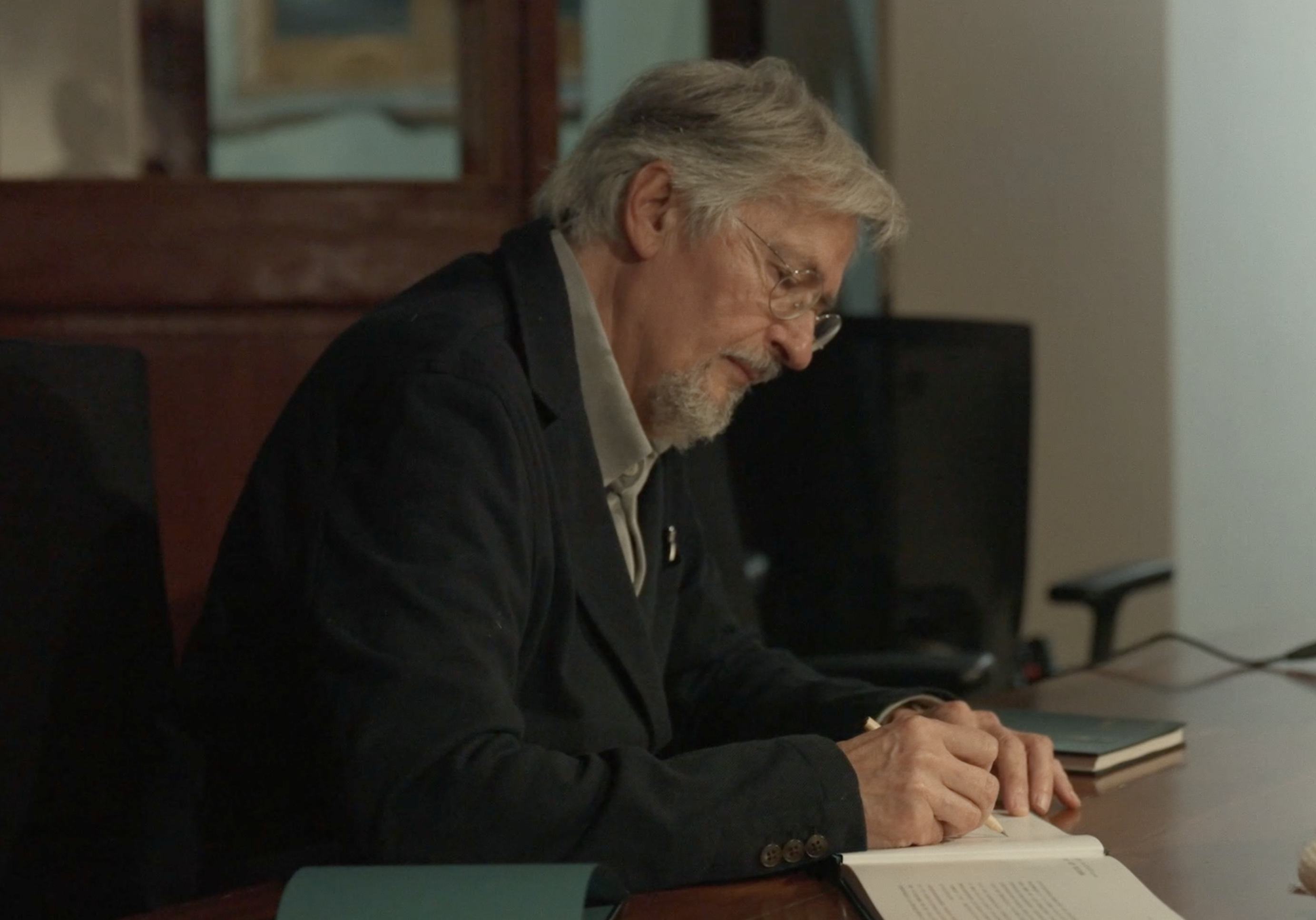
ART GUIDE -
Dr.Domènec Corbella
Dr. Domènec Corbella is the esteemed mentor and professor of Wang Jie during his studies at the University of Barcelona. He often shared with Wang Jie the belief that "as an artist, you know that painting evolves with time. This means that I consider painting as a reflection of the moments of emotions and existence in one's life."
Dr. Corbella himself is a renowned artist and researcher on the international stage. He has presented his Cognitive Painting Laboratory at various conferences, including the European Forum of Fine Arts, the "With Painting" Conference at the Bella Artes Research Center, the Third National Conference on Higher Education in Arts, and the International Conference on Contemporary European Painting.
Wang Jie and Professor Corbella share a similar perspective on art and life, and they frequently engage in creative exchanges. They have become indispensable lifelong friends, influencing each other's artistic expressions and enriching their respective journeys in life and art.
AN UNFORGETTABLE ENROLLMENT GIFT
Art is the embodiment of emotions, transcending the mere act of painting.
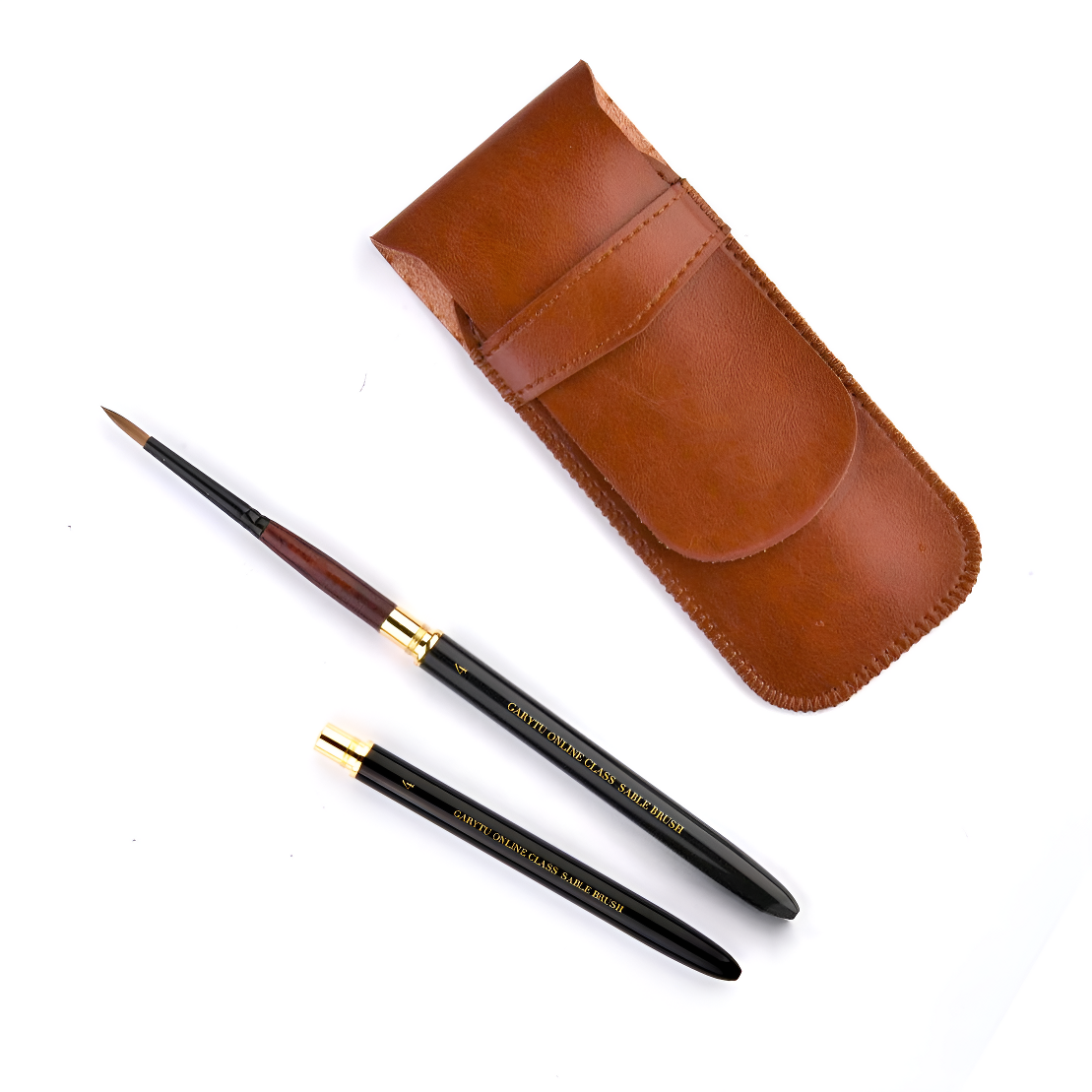
The Daimao Watercolor Brush is renowned worldwide for its exceptional quality materials and exquisite craftsmanship. The soft and elastic mink hair fibers maintain the brush's flexibility and water absorption, allowing for effortless control of paint flow and effects.
Whether you prefer delicate details or bold strokes, the Daimao Watercolor Brush delivers outstanding expressiveness and rich layering. This travel set also comes with a textured leather case for easy portability and storage, making it the perfect companion for your artistic endeavors. Let it become the magical medium that brings your imagination to life and embarks you on an enchanting artistic journey!
Package includes:
- 1 Daimao Watercolor Brush (Size 4)
- 1 Leather storage case
A TRAVEL SKETCHING COMPANION: CONVENIENT AND THOUGHTFUL ENROLLMENT GIFT
Art is the embodiment of emotions, transcending the mere act of painting.

This meticulously designed travel set allows you to showcase your creativity wherever you go. Whether you're sketching en plein air, embarking on adventurous travels, or finding inspiration in the comfort of your studio, this portable set enables you to effortlessly create exquisite, detailed strokes and vibrant colors.
The delicate and sensitive nature of the mink hair brushes requires special protection. That's why this set includes a rotating pen case specifically designed to safeguard your mink hair brushes from damage. The rotating feature allows for easy storage and retrieval of the brush handles, ensuring they are shielded from external risks.
With this travel set, you have the freedom to express your artistic vision anytime, anywhere. Take advantage of its compact and convenient design to capture the beauty around you and bring your artistic aspirations to life.
Note: The exact contents and design of the set may vary.
Garytu online Class
MINK HAIR WATERCOLOR BRUSH TOOL TRAVEL SET
Art is the embodiment of emotions, transcending the mere act of painting.
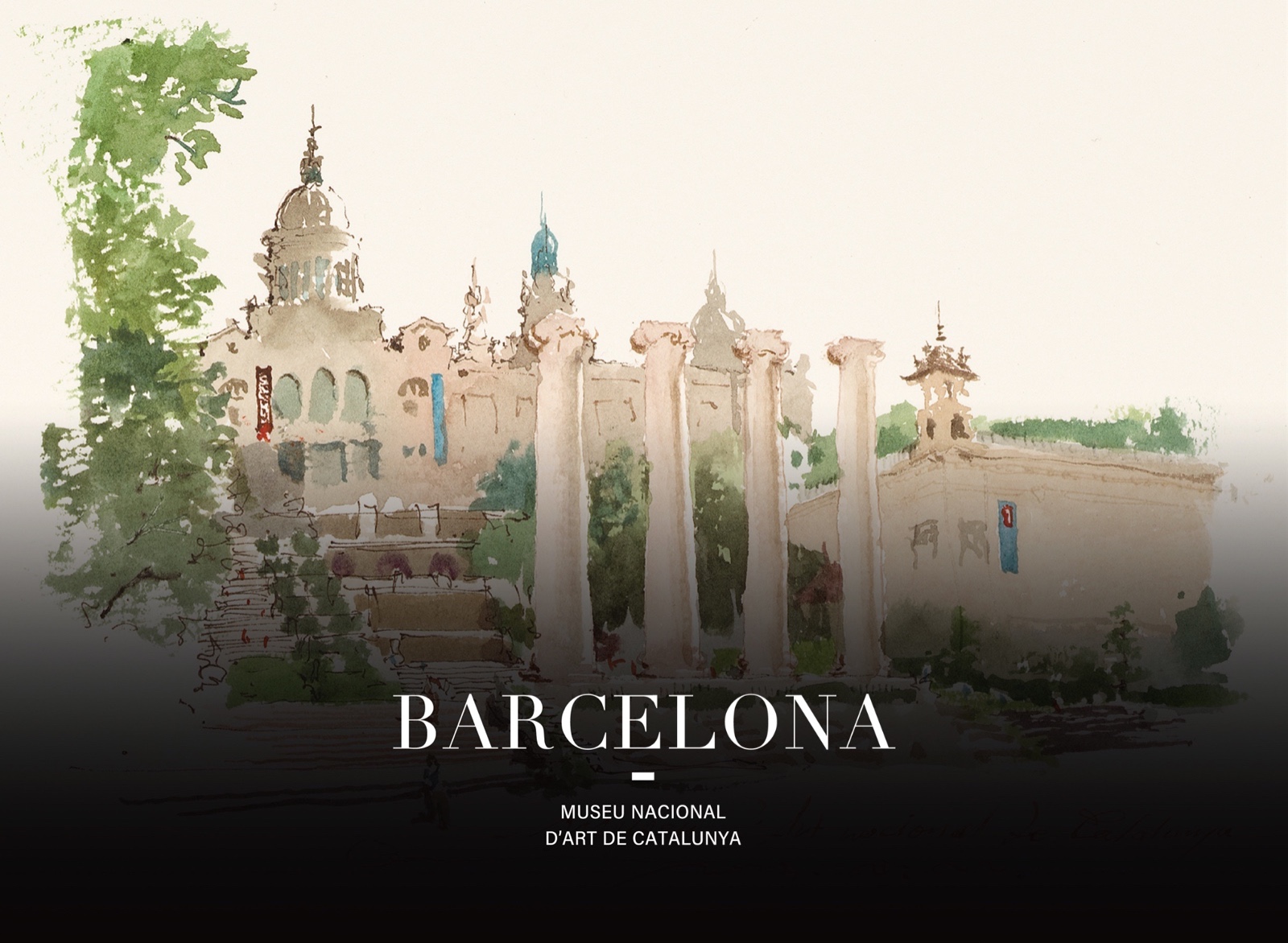
PAINTING REQUIRES TIME FOR OBSERVATION, COMPLETE ENGAGEMENT, AND TRANSFORMS FLEETING MOMENTS INTO PROFOUND AND TIMELESS IMAGES.
Through keen observation and total immersion, painting elevates fleeting moments into profound and timeless expressions.
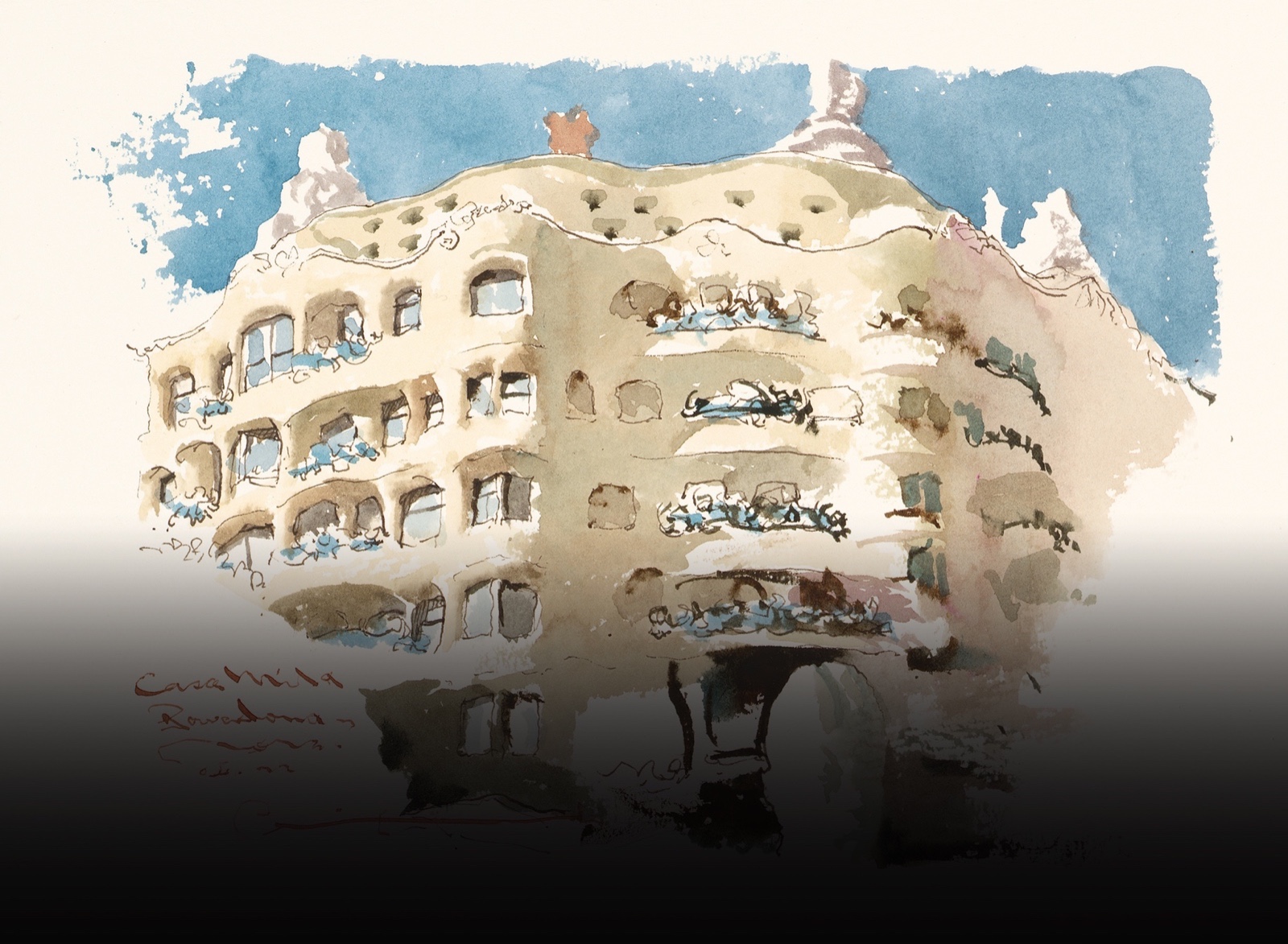
JOURNEY OF MEMORIES
- A TRIP TO BARCELONA
Journey to Barcelona with Master Wang Jie. In this course, Master Wang Jie will utilize his expertise in watercolor sketching to capture the various corners of Spain as seen through his eyes.
You will witness the portrayal of iconic modernist architecture by the renowned architect Antoni Gaudí, including the majestic Sagrada Família and Casa Milà, where irregular architectural light and shadows come to life. Traditional Spanish buildings and pastoral landscapes, as well as the Renaissance-style architecture of Barcelona, will be depicted. Realistic watercolor portraits integrated into the cityscape of Barcelona will also be showcased.
Returning to Barcelona, each memory will be meticulously illustrated by Master Wang Jie throughout the course.
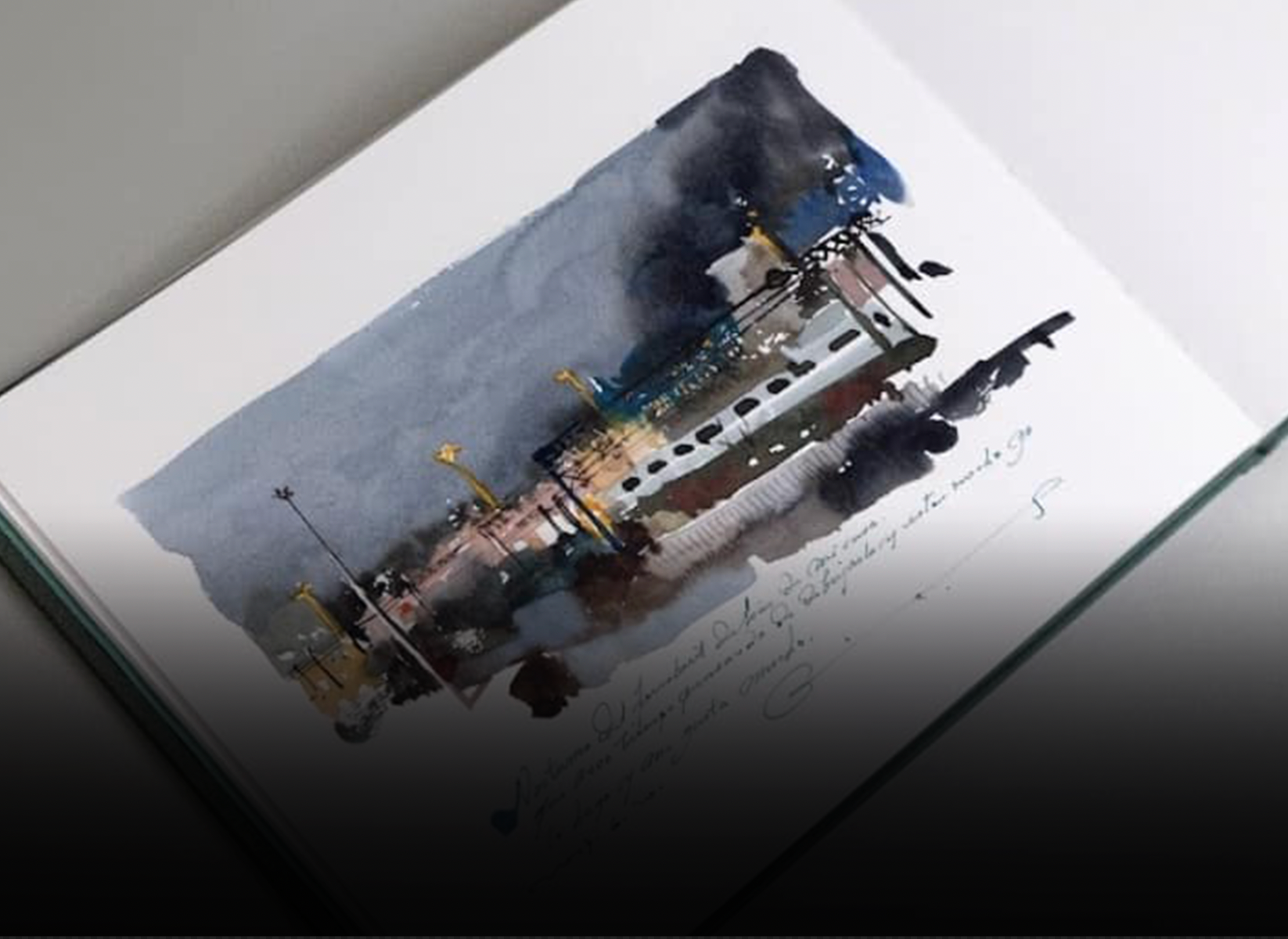
MASTER'S CHOICE: SKETCHING
Master Wang Jie says, "Drawing is simply a blank sheet of paper and some lines, perhaps with a touch of color. But sometimes, a drawing can bring tears to the eyes of those who see it - I believe that's a kind of magic. And I want to share my magic with you. Together, let's depict the beauty we encounter, capturing it in moving records."
Photography captures a moment in an instant, freezing memories with the press of a shutter. However, it may lack a certain level of dialogue and communication. In this technologically advanced era, drawing is different.
"If you truly want to draw, you have to sit there, observe, and immerse yourself in the experience, even if it's only for a short half hour. It will be profound, so profound that when you revisit that drawing in the future, you can still feel the light, shadows, and air of that moment."
Drawing allows for a deeper connection and understanding of the subject matter. It requires time, observation, and personal interpretation, creating a more intimate and evocative representation. Through sketching, Master Wang Jie aims to capture not only the visual aspects but also the emotions, atmosphere, and essence of the scenes he encounters. He believes that the magic of drawing lies in its ability to convey a deeper understanding and touch the hearts of those who view his artworks.
ART JOURNEY - KEY ELEMENTS OF COURSE LEARNING.
EXPERIENCING MASTER WANG JIE'S THREE MAJOR STYLES
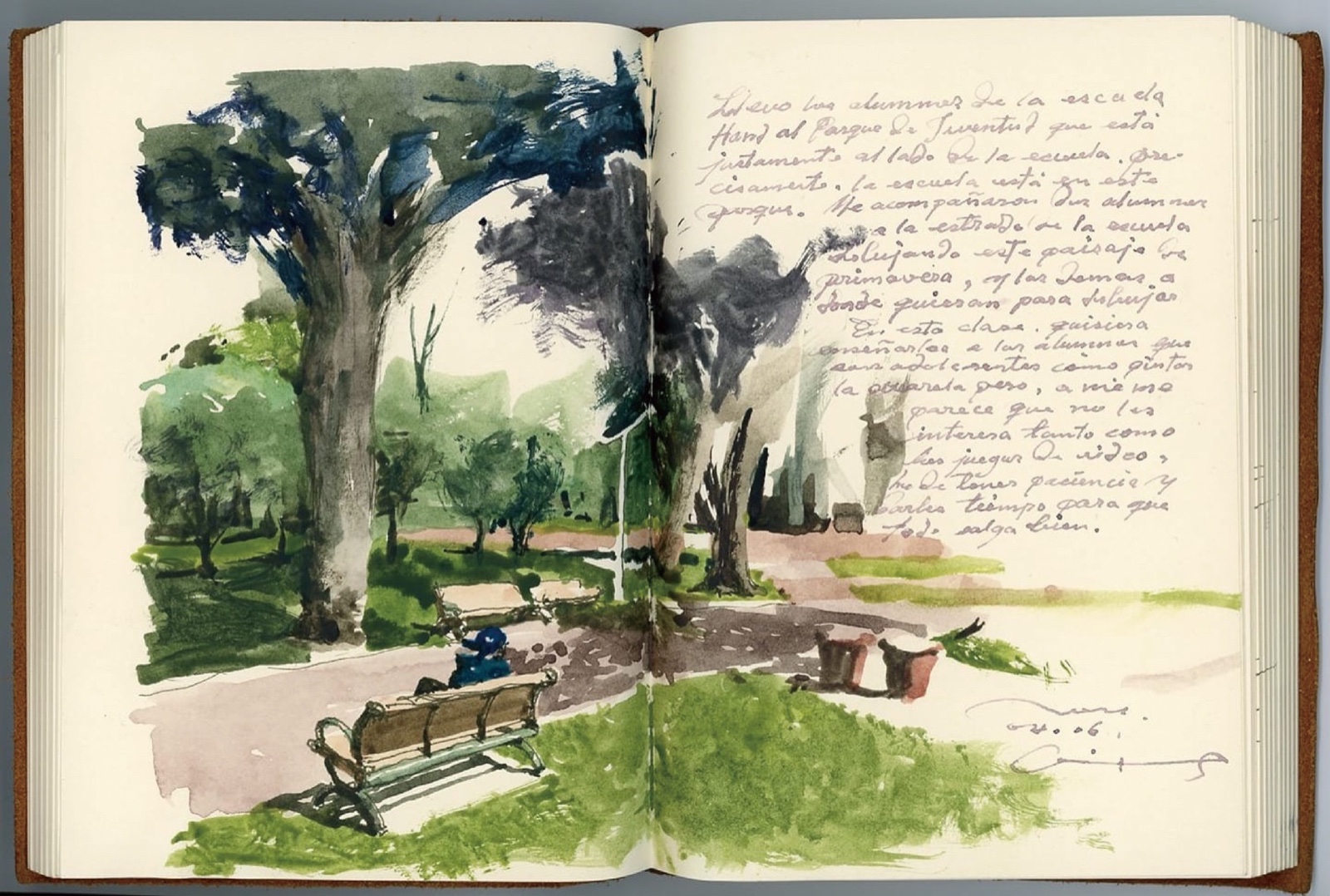
- ARCHITECTURAL -
Master the techniques, light and shadow structures, and the relationship between artwork and physical scenes in drawing architectural and landscape paintings.

- PORTRAIT SKETCH -
By using the technique of sketching, one can quickly and accurately capture the proportions of a person and depict them vividly.
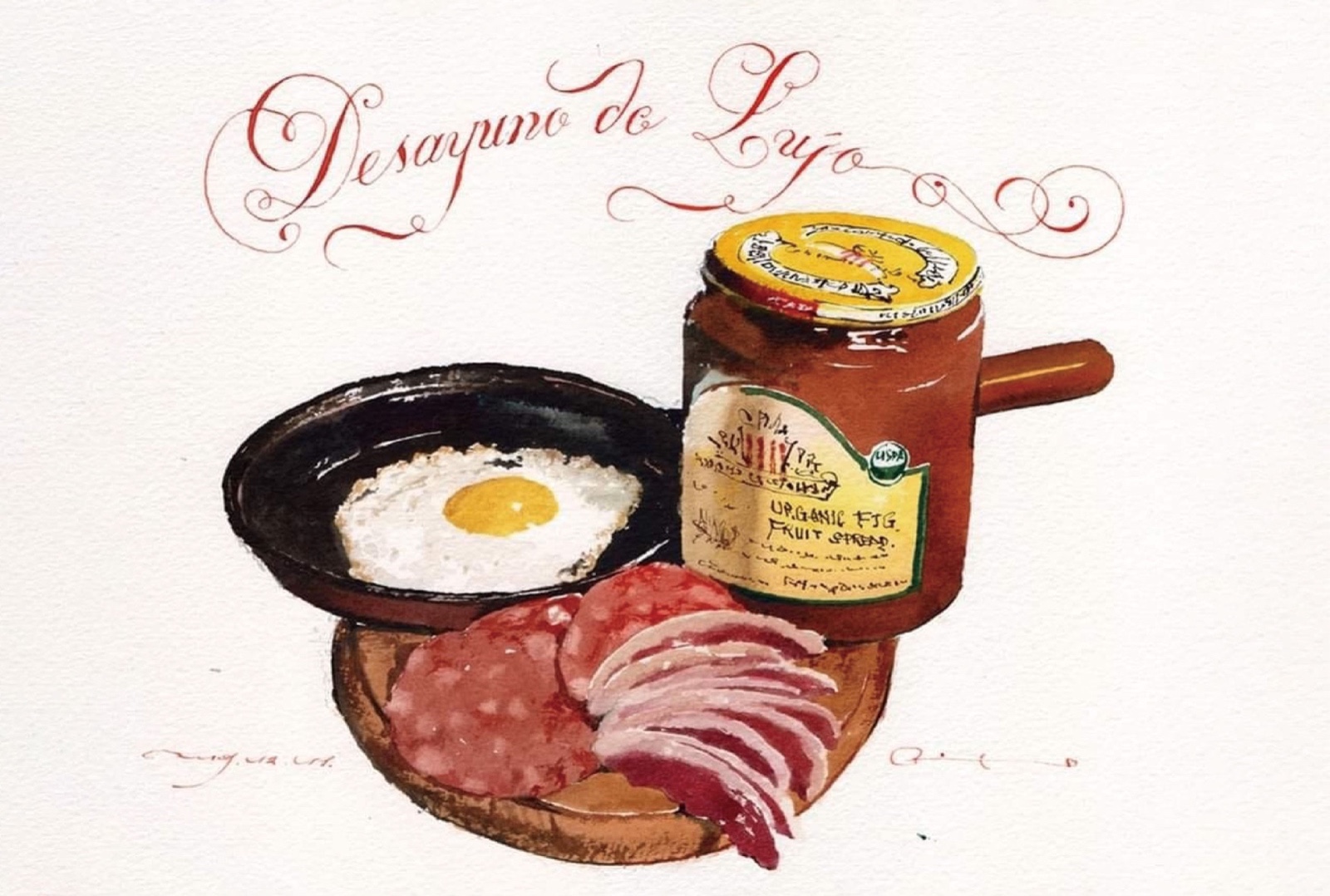
- EVERYDAY OBJECTS-
Depicting life and guiding the visual focus to hightlight the key elements of a sence, while showcasing a sence of quality and life style, is an art in itself.
ARCHITECTURE LANDSCAPE
LEARNING TO OBSERVE VARIOUS PERSPECTIVE TECHNIQUES.
Through the precise use of colors and delicate brushstrokes, along with different perspectives and spatial analyses, one can depict the solid structures of arches and high walls found in the Baroque-style architecture of Spain, as well as the vibrant and lively atmosphere of one's hometown, Keelung. By painting, these memories, which are ordinary but deeply etched in one's heart, can be recorded and preserved in a way that is unique to oneself.

Explore the watercolor architectural landscape painting tutorial by Mr. Wang Jie, and embark on a journey into a whole new world of creativity. This tutorial is not just about learning painting techniques; it is a marvelous journey of dialogue with nature and architecture.
In this course, you will learn Mr. Wang Jie's unique observation skills and delicate expression in his artwork. With his guidance, you will learn to capture the perspective, lines, shapes, and details of buildings and transform them into stunning watercolor paintings.
Mr. Wang Jie will share his creative philosophy and teach you how to use color, light, and space to create a unique atmosphere and evoke emotions. You will learn to utilize the transparency and fluidity of watercolors to depict depth and layers in architectural landscapes. This tutorial is not just about imparting techniques; it is a way to inspire your observation of the world. Through this course, you will develop a keen sensitivity to architecture and nature and gradually cultivate your own unique artistic style.
Whether you are a beginner or have previous painting experience, this tutorial will provide you with a rich learning experience and creative inspiration.
PORTRAIT SKETCH
LEARNING TO OBSERVE VARIOUS PERSPECTIVE TECHNIQUES.
Through capturing people in your artwork, you can also document the passing of time and your own youthful years. With simple lines, you can outline the figures and convey their lively personalities. Adding a touch of color and using delicate brushstrokes, you can depict various postures and gestures from everyday life.
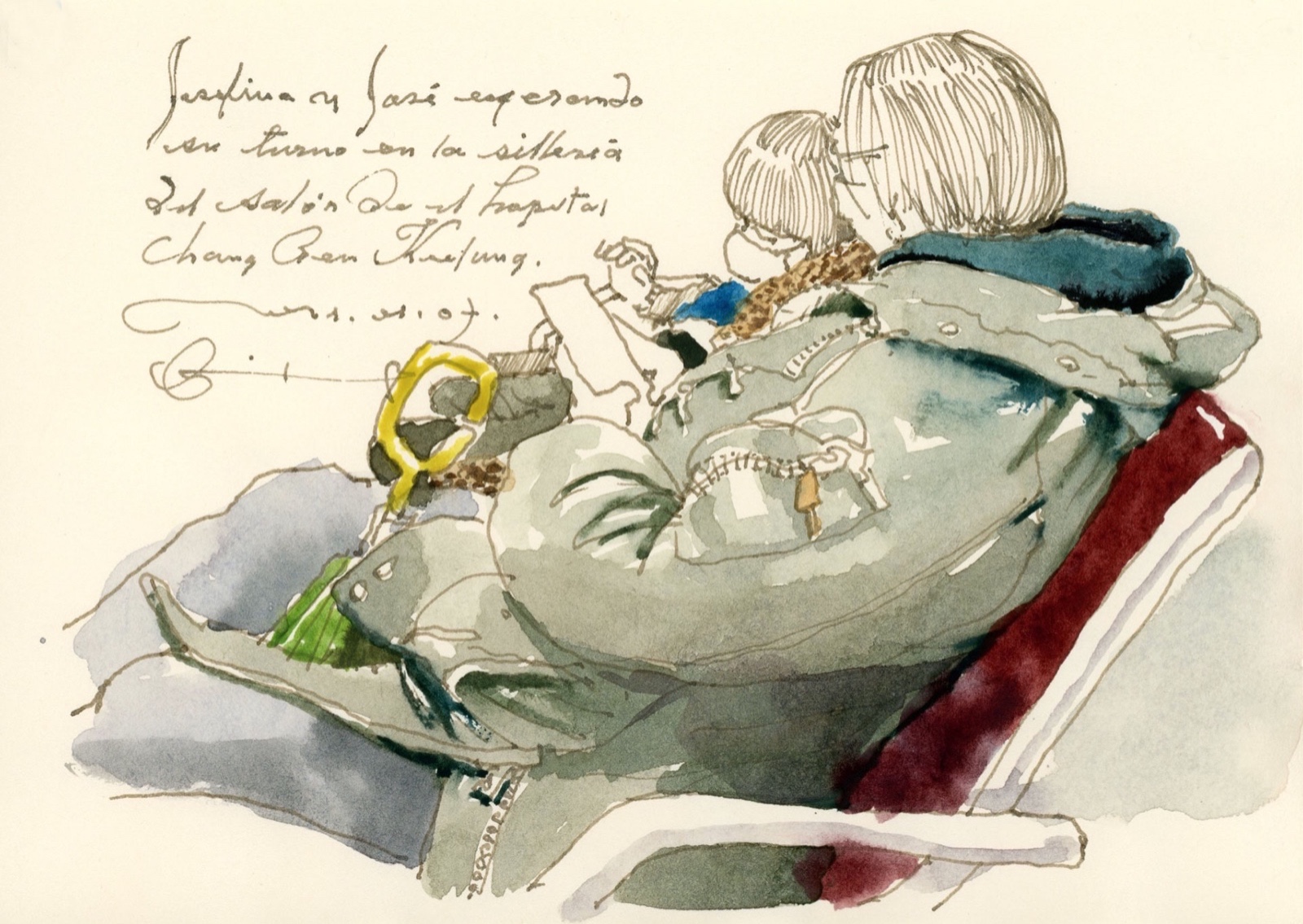
Watercolor and pen sketching tutorial for capturing people will open up an artistic journey of encountering brushstrokes and delve into the inner world of individuals.
In this course, the instructor will share their creative concepts and teach you how to capture facial expressions, features, and movements of people and express them through watercolor and pen strokes.
During this tutorial, you will learn different techniques to create delicate and rich depictions of people using varied brushstrokes. You will master the importance of line variation and composition to portray vivid and expressive human figures.
The instructor will guide you on utilizing the unique characteristics of watercolor and pen to create distinctive artistic effects. It will inspire you to observe the details and emotions of individuals. This tutorial is suitable for all art enthusiasts, whether you are a beginner or an experienced artist, as it offers abundant creative inspiration and techniques. It is a journey of exploring people together with a Taiwanese art master, allowing us to wield our brushes and showcase the beauty and emotions of individuals on paper.
EVERYDAY OBJECTS
LEARNING TO OBSERVE VARIOUS PERSPECTIVE TECHNIQUES.
By keenly observing, we can capture the small and beautiful moments of life and portray them in our artwork. This allows us to rediscover and appreciate the details of life, enabling us to fully enjoy the present moment and immerse ourselves in this wonderful creation.
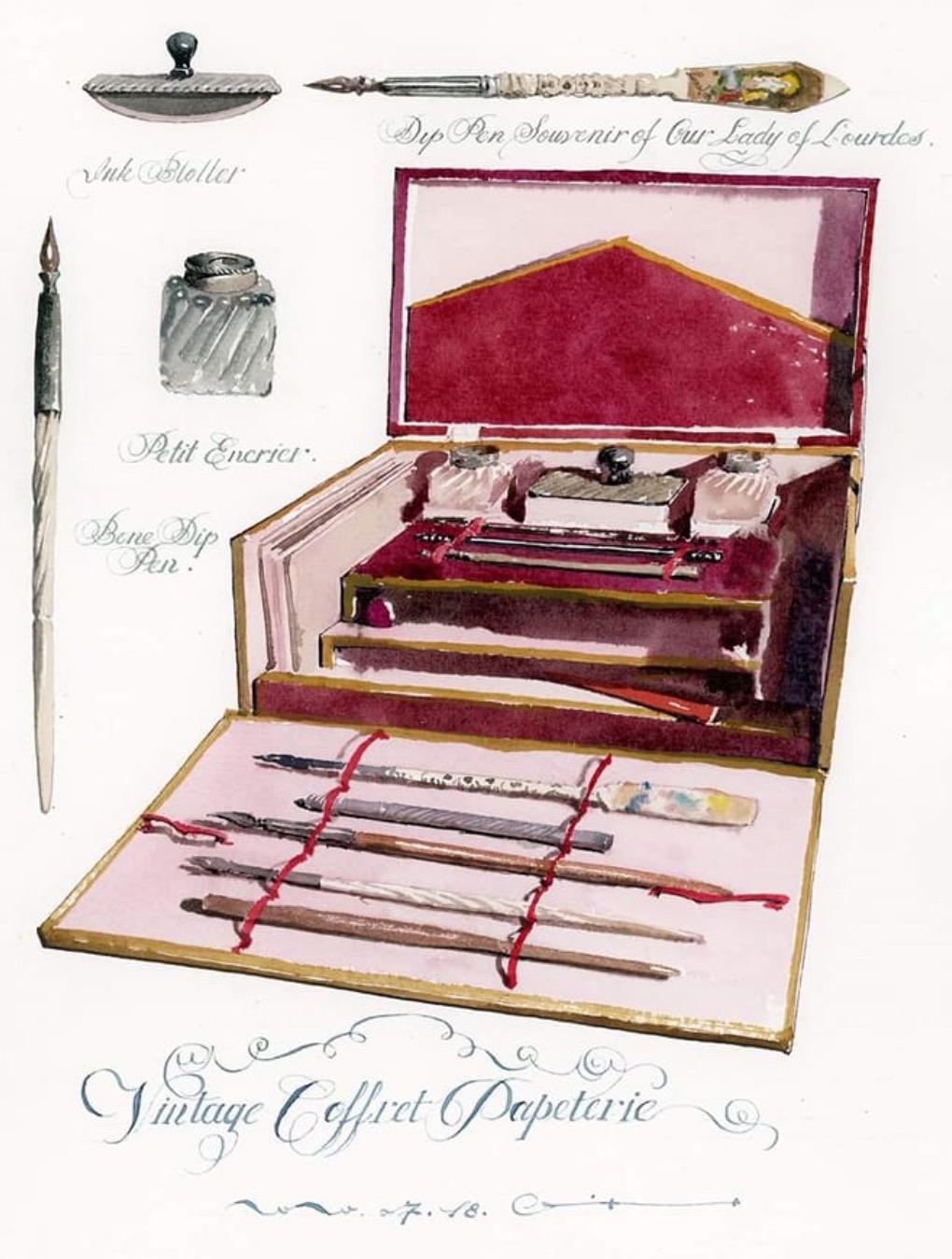
This is a journey through the time of life and everyday objects in the realm of art. This tutorial will guide you into a world of keen observation and expressing the beauty of life.
In this course, you will learn how to incorporate the sense of daily life into your artwork. You will be taught how to capture the shapes, textures, and details of everyday objects, and use watercolor and pen techniques to bring them to life on paper.
Throughout this tutorial, you will learn to utilize the transparency and layering effects of watercolor, as well as the line work and detailing of pen strokes, to create a rich atmosphere for your everyday objects. You will develop the ability to observe light and shadow effects and color variations, and apply them to your artwork, creating stunning visual effects.
Mr. Wang Jie will share his creative techniques and inspirations, enabling you to transform everyday objects into unique works of art. This tutorial is not just about learning techniques, but also about inspiring you to observe and express the beauty of everyday life. Let us use watercolor and pen to turn macarons, feather pens, exquisite stationery pen boxes, delicious food, or any other objects into vivid artworks, delicately presenting the beauty of life.
DYNAMIC RELATIONSHIP
AN ANALYSIS OF THE RELATIONSHIP BETWEEN PERSPECTIVE AND CULTURAL ARCHITECTURE.
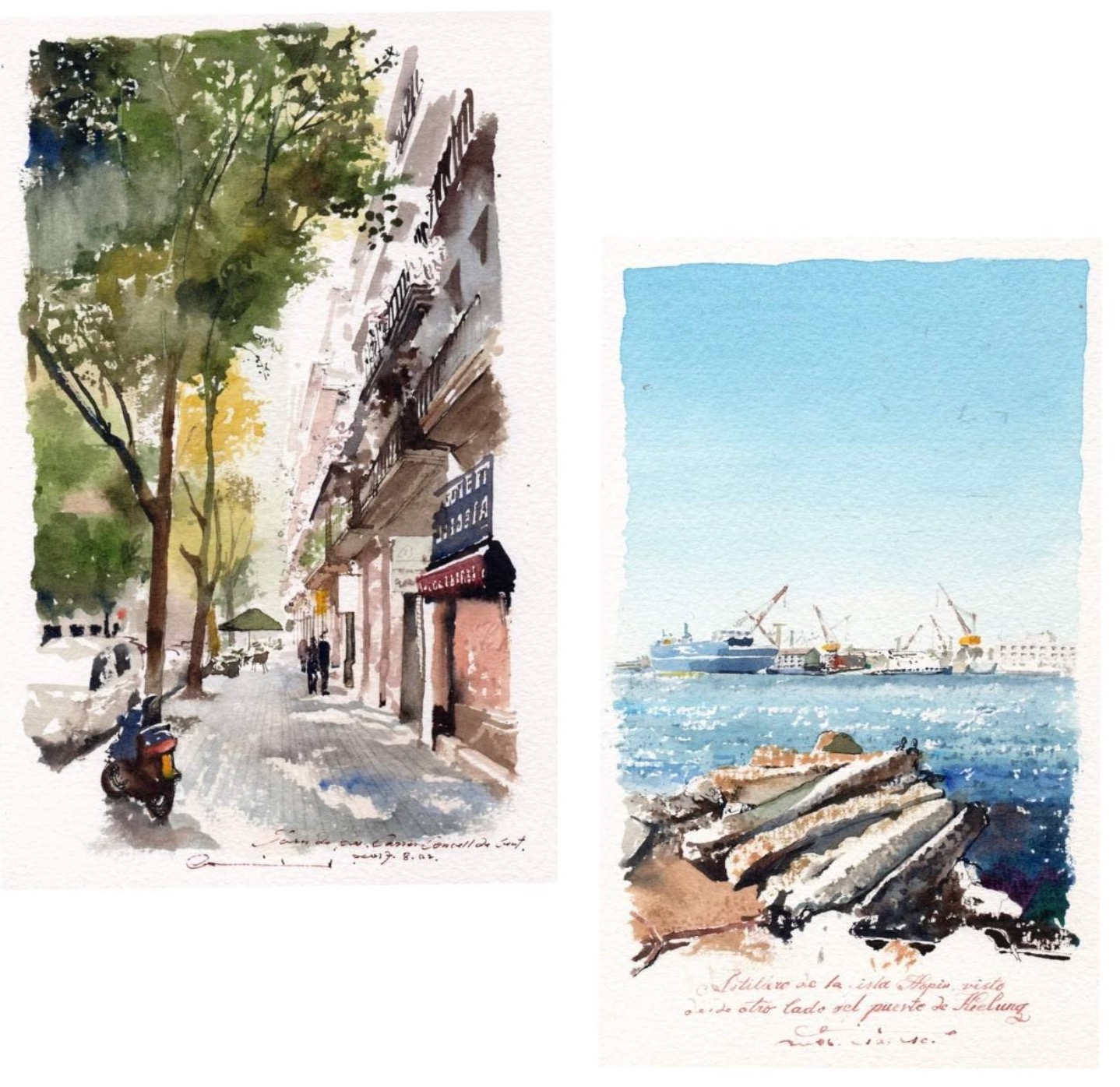
Each culture has its unique architectural features and meanings, which reflect its society, history and values.
By applying perspective to the scenes we observe, we can create a sense of depth and spatial realism in the flat images or structures, allowing viewers or users to experience a three-dimensional presence.
Different cultures and Eastern and Western perspectives have distinct understandings and representations of spatial perception and architectural structures.
They may emphasize the richness of the plane and the expression of details, or focus on the layering and sense of depth in space.
We will observe the details, structures, and symbols of architecture to understand how cultural buildings reflect people's values and identity.
Therefore, cultural background and values will also influence the application of perspective techniques, giving architecture its unique appearance and characteristics.
In this course, we will analyze the relationship between perspective and cultural architecture through practical examples, delving into the cultural significance behind architectural designs.
This course will provide you with an opportunity to deepen your understanding of the relationship between perspective and cultural architecture.
It will enrich your artistic creations and enhance your comprehension of the interplay between architecture and culture.
PERSPECTIVE TECHNIQUES
LEARNING TO OBSERVE VARIOUS PERSPECTIVE TECHNIQUES.
Perspective is an important concept. It is a technique used in art to depict the distance and depth of objects in space.
Through perspective, you can create more realistic, three-dimensional, and lifelike images.
The basic principles of perspective include the vanishing point, converging lines, and horizon line.
They help you establish correct proportions and a sense of space on the canvas.
Mastering perspective will enhance your painting skills and allow you to create stunning visual effects.

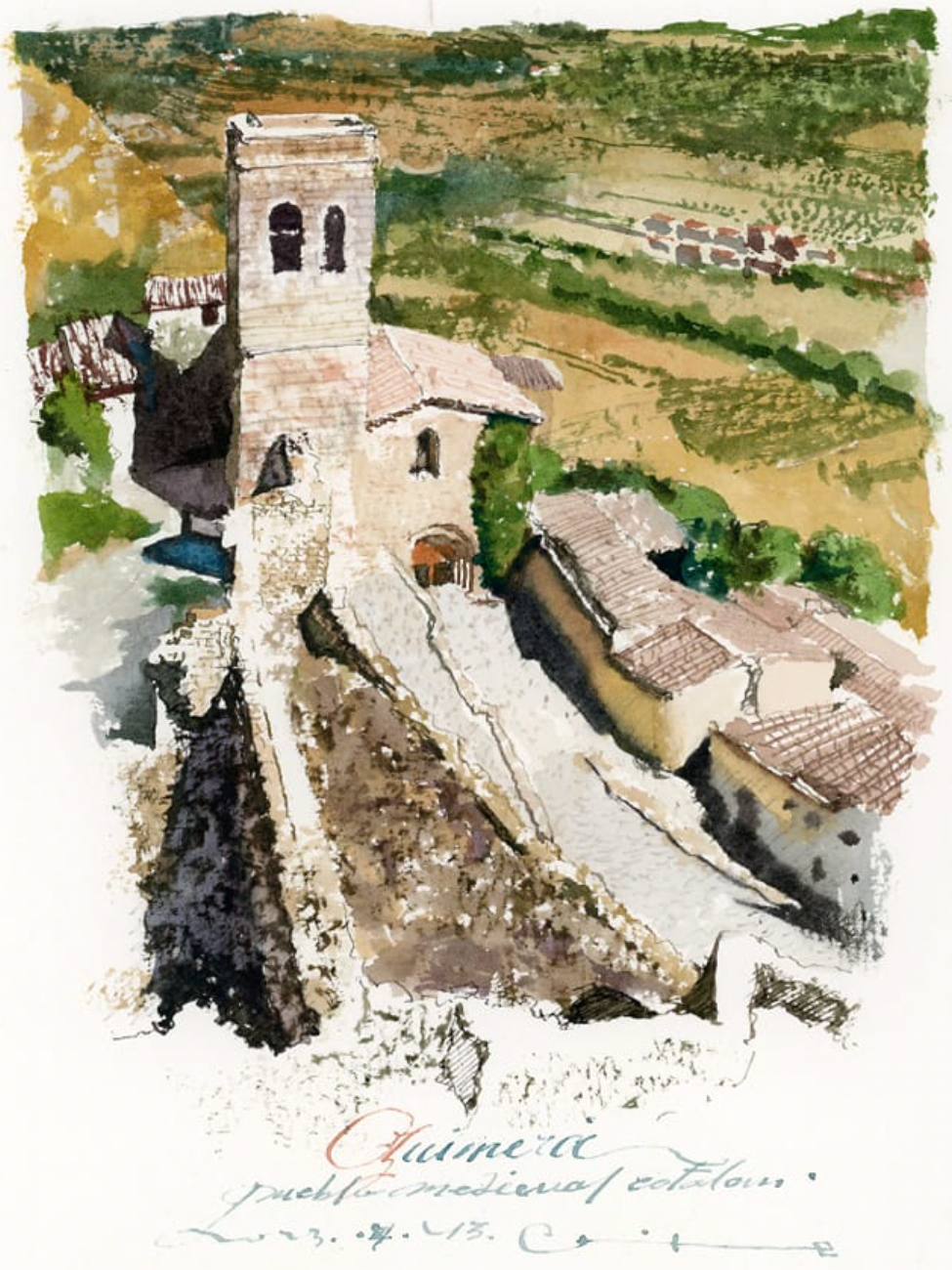
BASIC SPACE - ONE-POINT PERSPECTIVE.
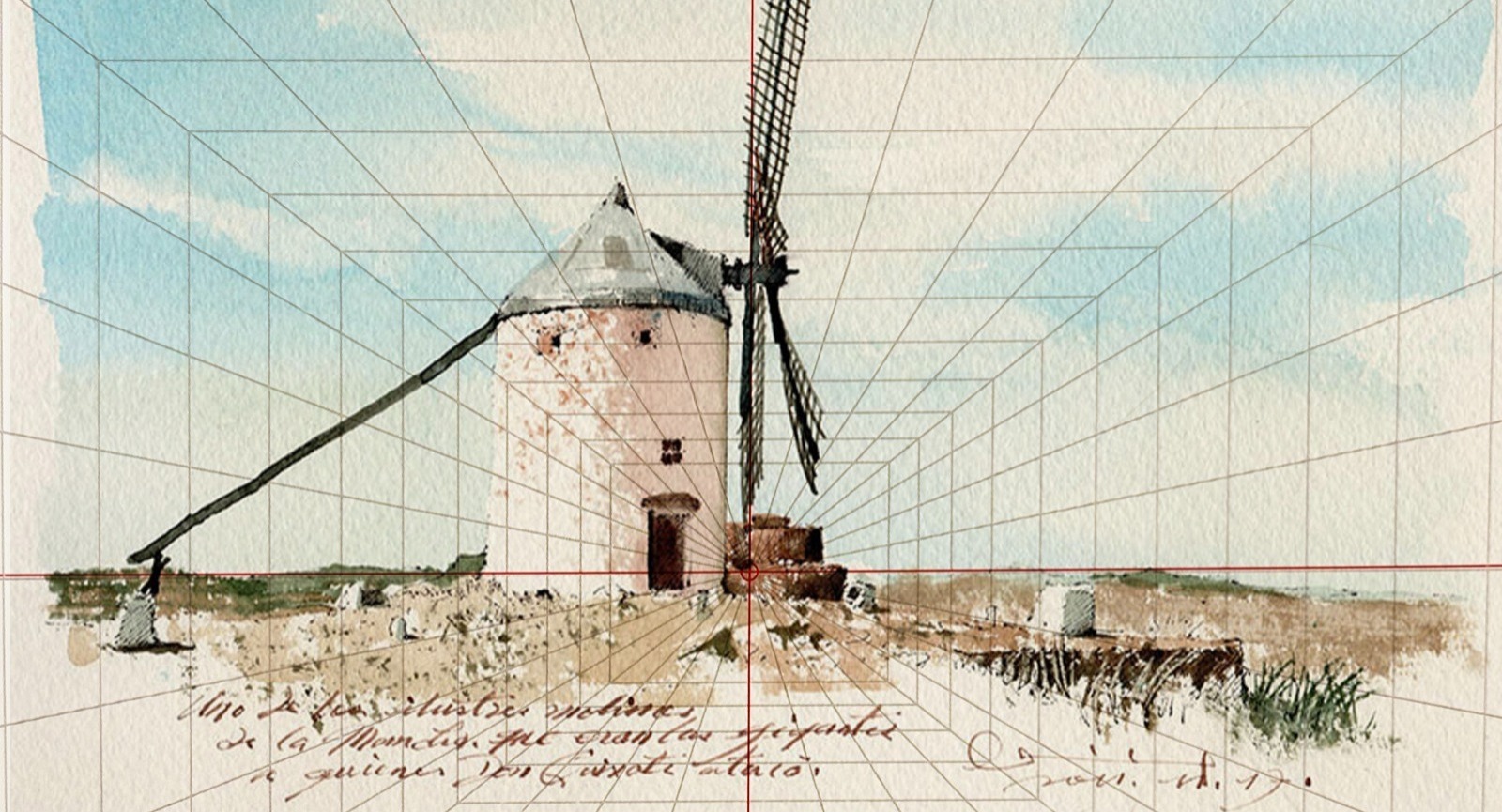
One-point perspective can be used to depict an infinite depth, allowing the viewer to perceive the distance and spatiality between foreground and background.
This perspective technique is often employed in drawing city streets, corridors, or interior scenes on a flat plane, giving the artwork a sense of distant view.
Cultivating your intuition for one-point perspective, understanding its principles, and applying it in your paintings can enable you to create works with depth and three-dimensionality.
MOST COMMON PERSPECTIVE - TWO-POINT PERSPECTIVE.
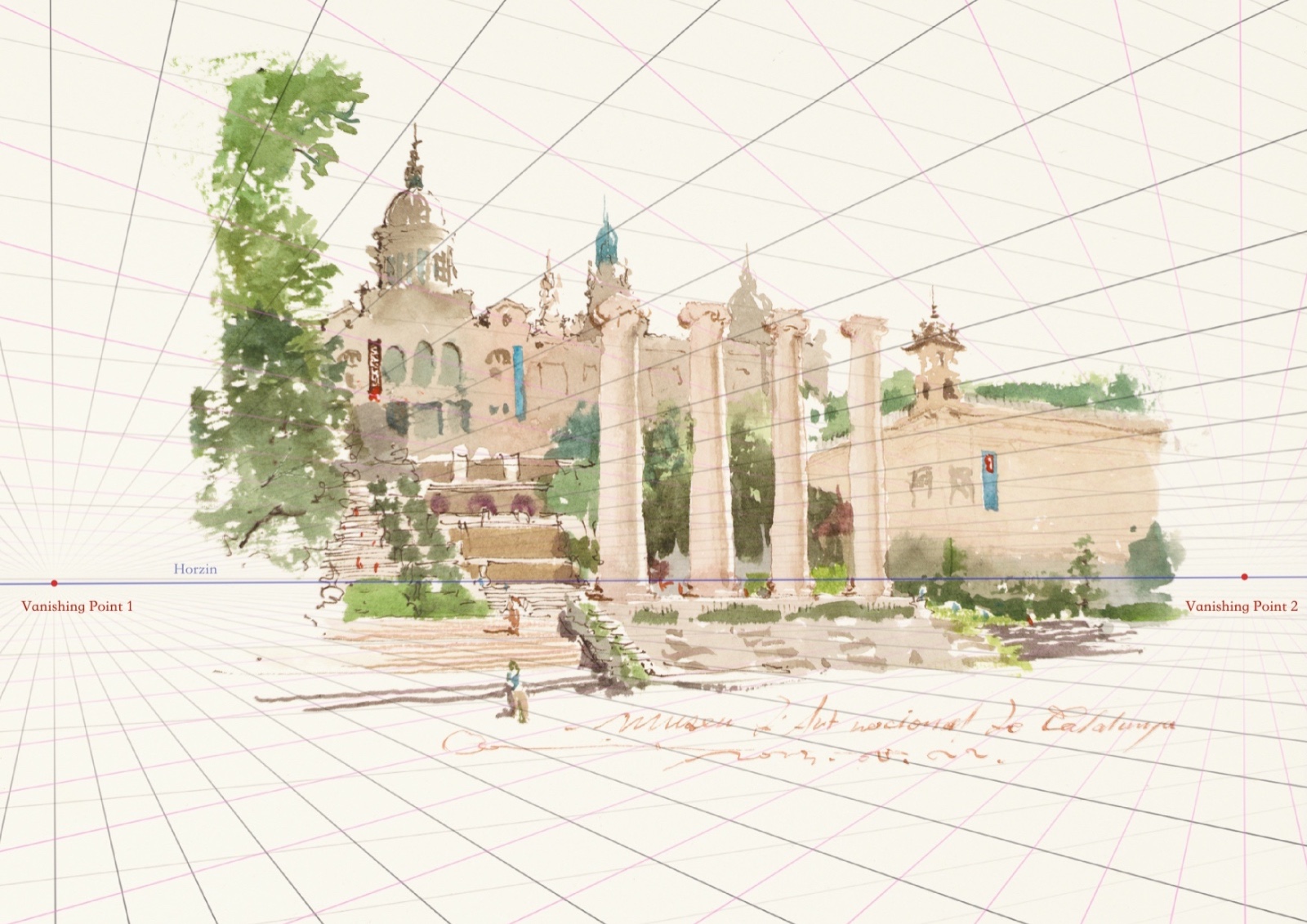
Unlike one-point perspective, two-point perspective involves two vanishing points, which are typically located on the left and right sides of the composition.
This perspective technique is often used to depict buildings with acute angles, such as tall skyscrapers or sloping landscapes, and it can give the artwork a sense of dynamism and depth.
Observing real-world scenes that exhibit two-point perspective, such as a street or a corner with buildings, can help you become familiar with the characteristics of two-point perspective.
Through practice and experimentation, you will be able to master the techniques of two-point perspective and create stunning visual effects.
IDEAL FOR OVERHEAD VIEW - THREE-POINT PERSPECTIVE.
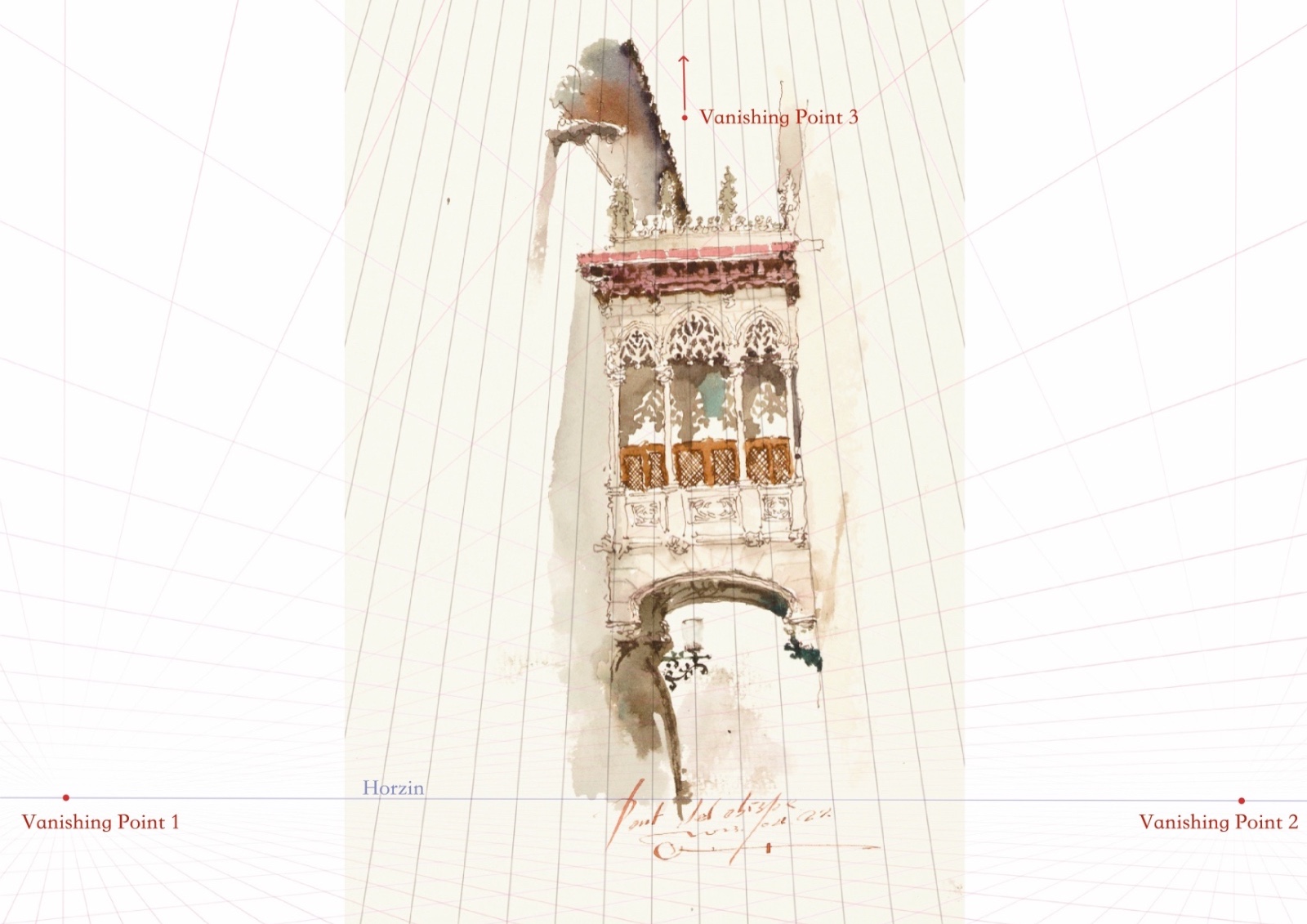
Three-point perspective is a more advanced technique in perspective drawing, different from one-point and two-point perspective.
In three-point perspective, there are three vanishing points, which are typically located in different positions within the composition.
This perspective method is commonly used to depict highly inclined or unusual angles of architecture, such as a tower or a group of buildings on a slope, creating a very dramatic and dynamic effect.
It aims to achieve realism and detail in terms of the shape, proportion, and spatial relationships of objects, making your artwork more realistic.
REALISM IN ART - MULTI-POINT PERSPECTIVE.
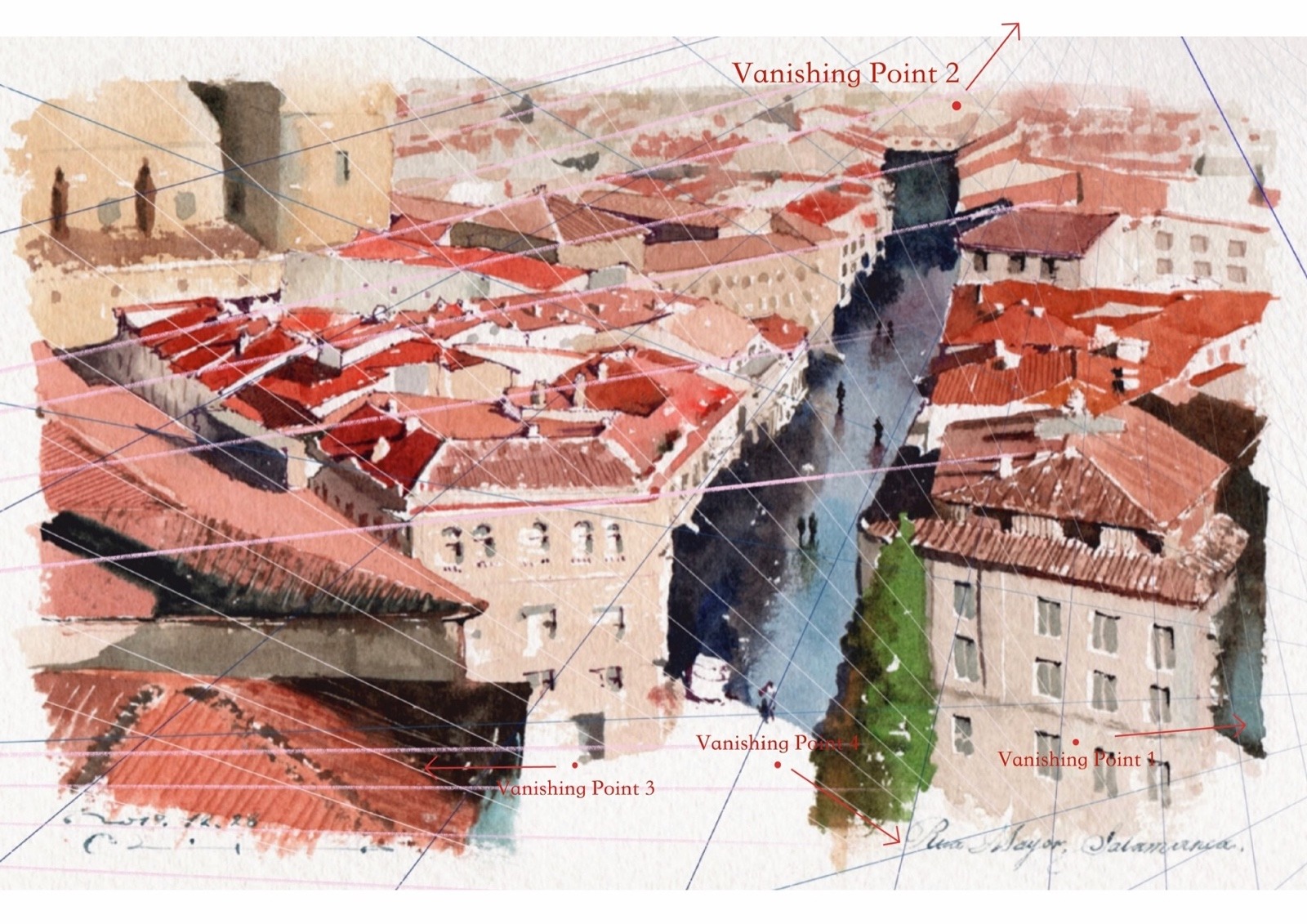
Compared to two-point and three-point perspective, multi-point perspective allows for more flexibility in handling spatial changes and object positions within the composition. This perspective technique is commonly used to depict extremely distorted or highly complex scenes, such as corridors, spiral staircases, or peculiar architectural structures. The defining characteristic of multi-point perspective is its ability to present highly varied and distorted spatial effects, creating very dramatic and fantastical visual results. It offers greater freedom and expressiveness, making the artwork dynamic and artistic. Multi-point perspective is more complex and requires higher skills and experience to master. For beginners, it is recommended to start learning from the basics of one-point and two-point perspective, gradually gaining an understanding of the principles and applications of perspective. Then, one can further challenge themselves with the techniques of multi-point perspective.
ARCHITECTURAL LIGHTING -
EXPRESSION OF SHADOWS AND DEPTH.
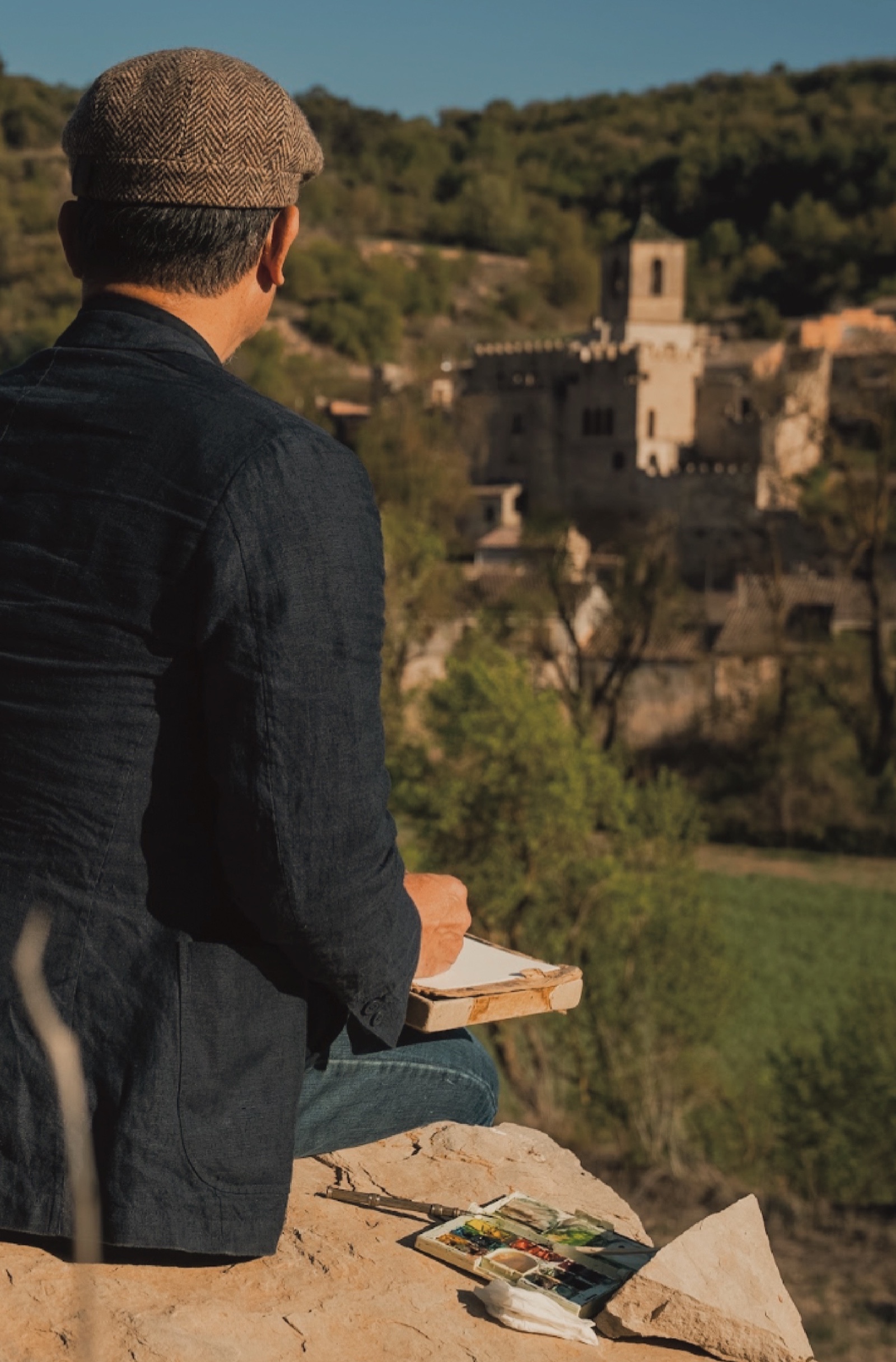
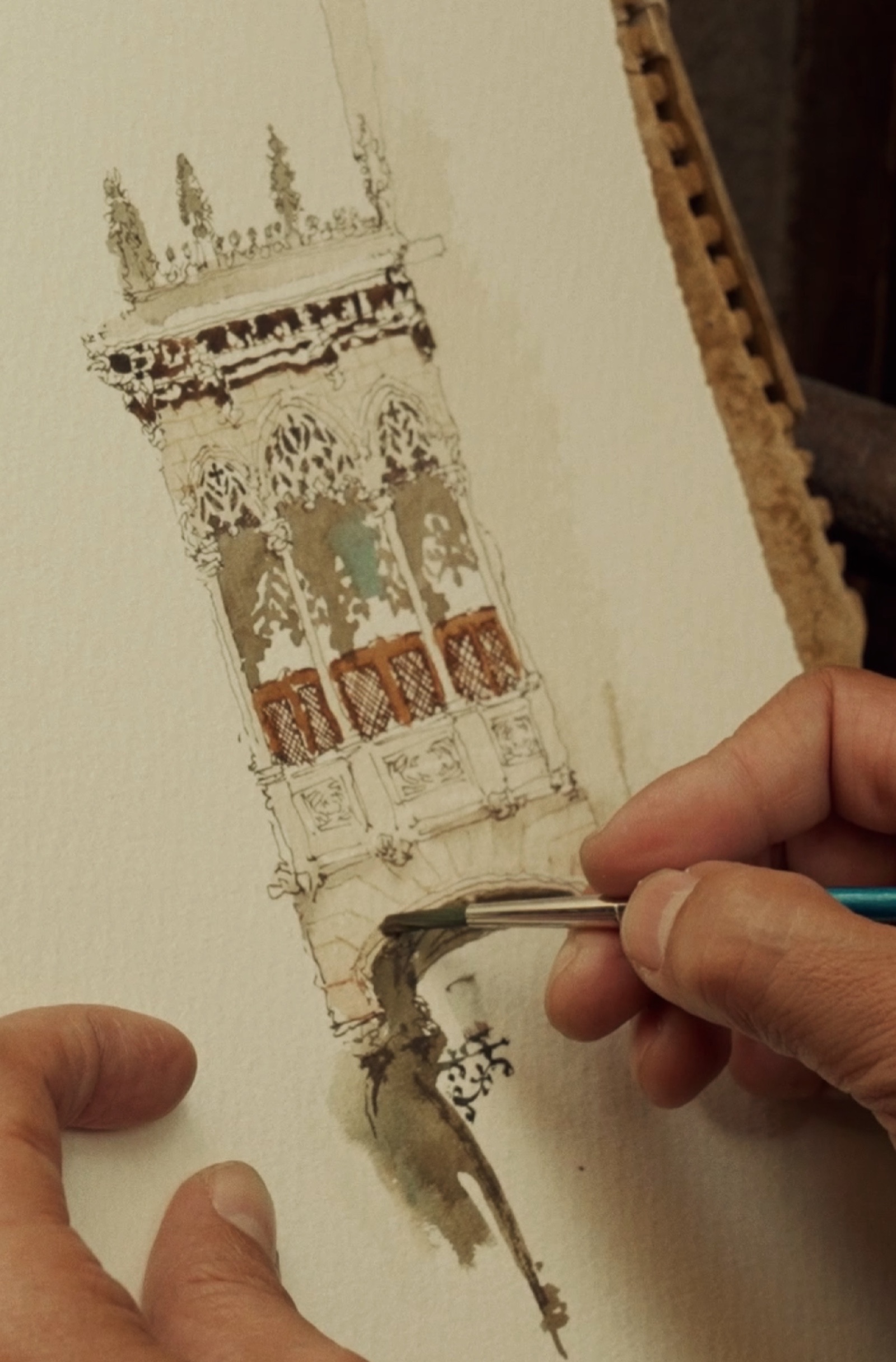
HOW TO CAPTURE THE CHANGING LIGHT AND SHADOW.
When sketching architecture, capturing the relationship between light and shadow is crucial.Understanding the angle and intensity of light helps in capturing the variations of light and shadow on the building.Shapes and details on the building undergo changes under the influence of light and shadow.Observe how shadows and highlights shape the form of the building and pay attention to the areas of light and dark within the details.During sketching, it's important to quickly capture the changes in light and shadow.Rapidly record the observed effects using light touches and quick brushstrokes, focusing on the main relationships between light and shadow.
FIGURE SKETCHING -
HOW TO CAPTURE THE CHARACTERISTICS OF A PERSON.
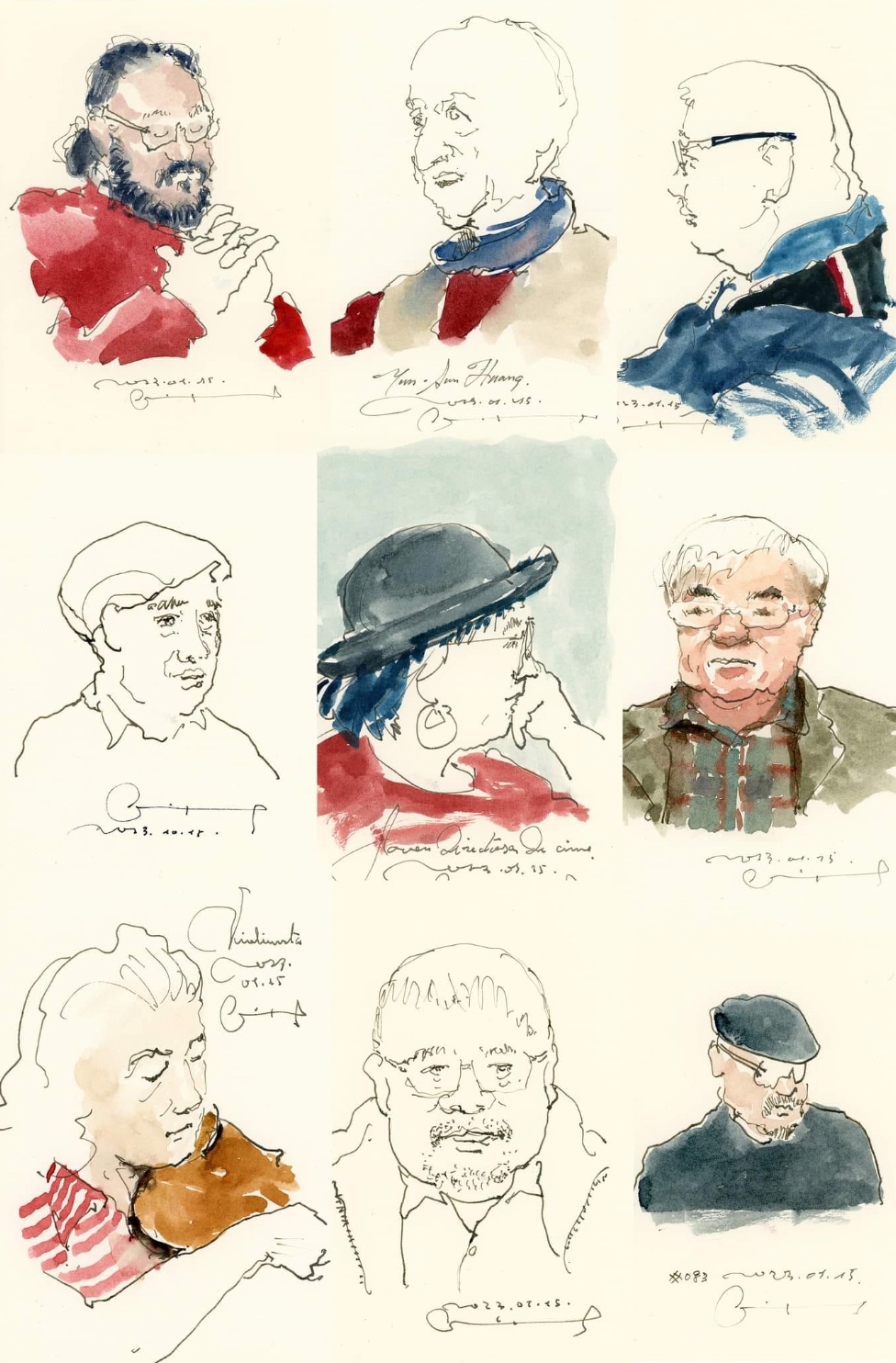
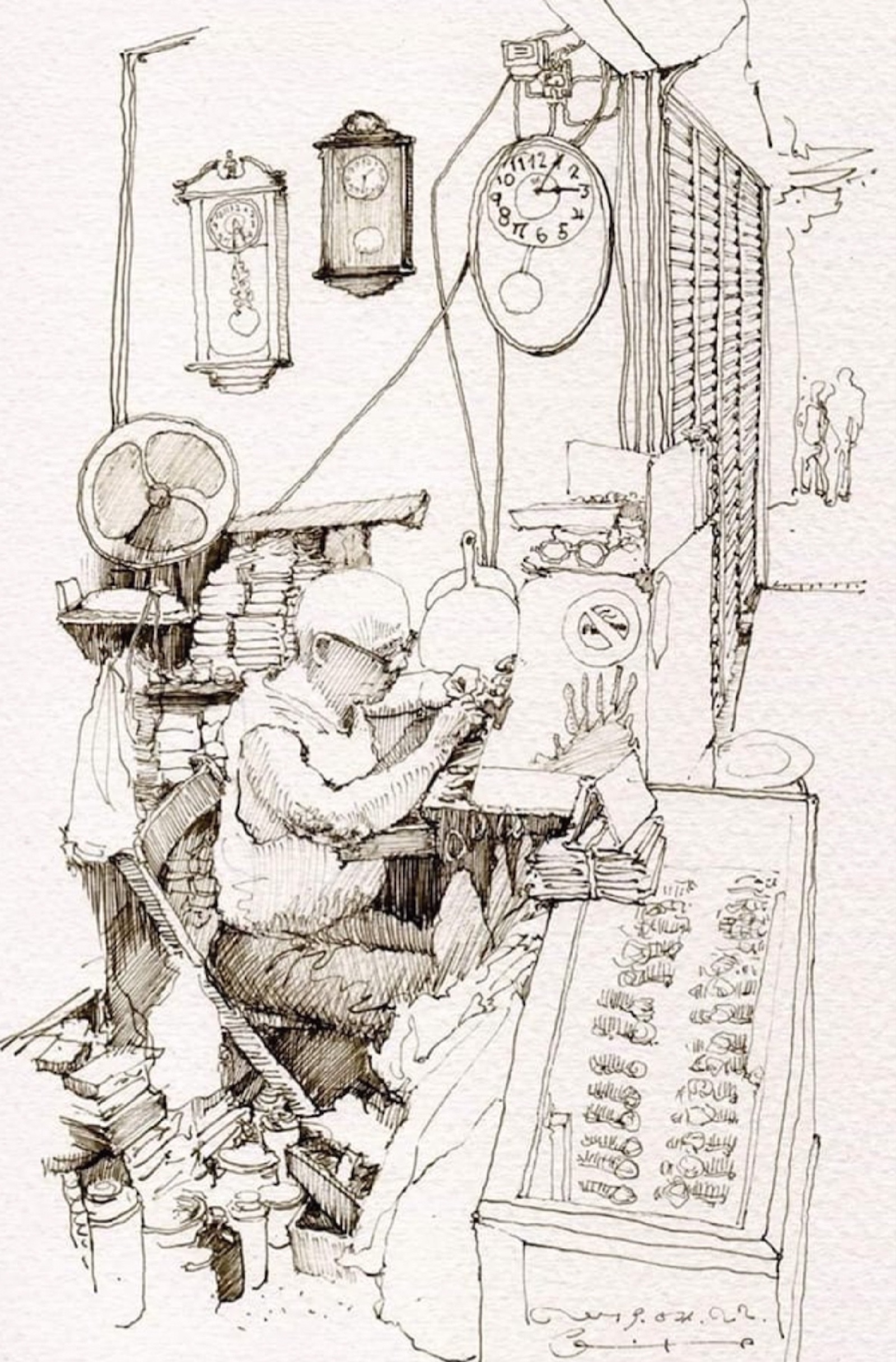
HOW TO CAPTURE THE ESSENCE OF A PERSON'S APPEARANCE IN LIMITED TIME.
To capture a person's appearance in limited time, you can highlight their posture, gestures, facial features, and emphasize their attire and hairstyle.Pay attention to the proportions of the figure and focus on capturing the unique characteristics and liveliness of the person in your sketch.Wang Jie demonstrates exceptional skills and keen observation in figure sketching.His delicate portraits lead us on a fantastical journey through Spain, allowing us to experience its beauty and mystery through his artwork.
SIX LEARNING INDICATORS
UNLOCK YOUR POTENTIAL THROUGH EDUCATION.
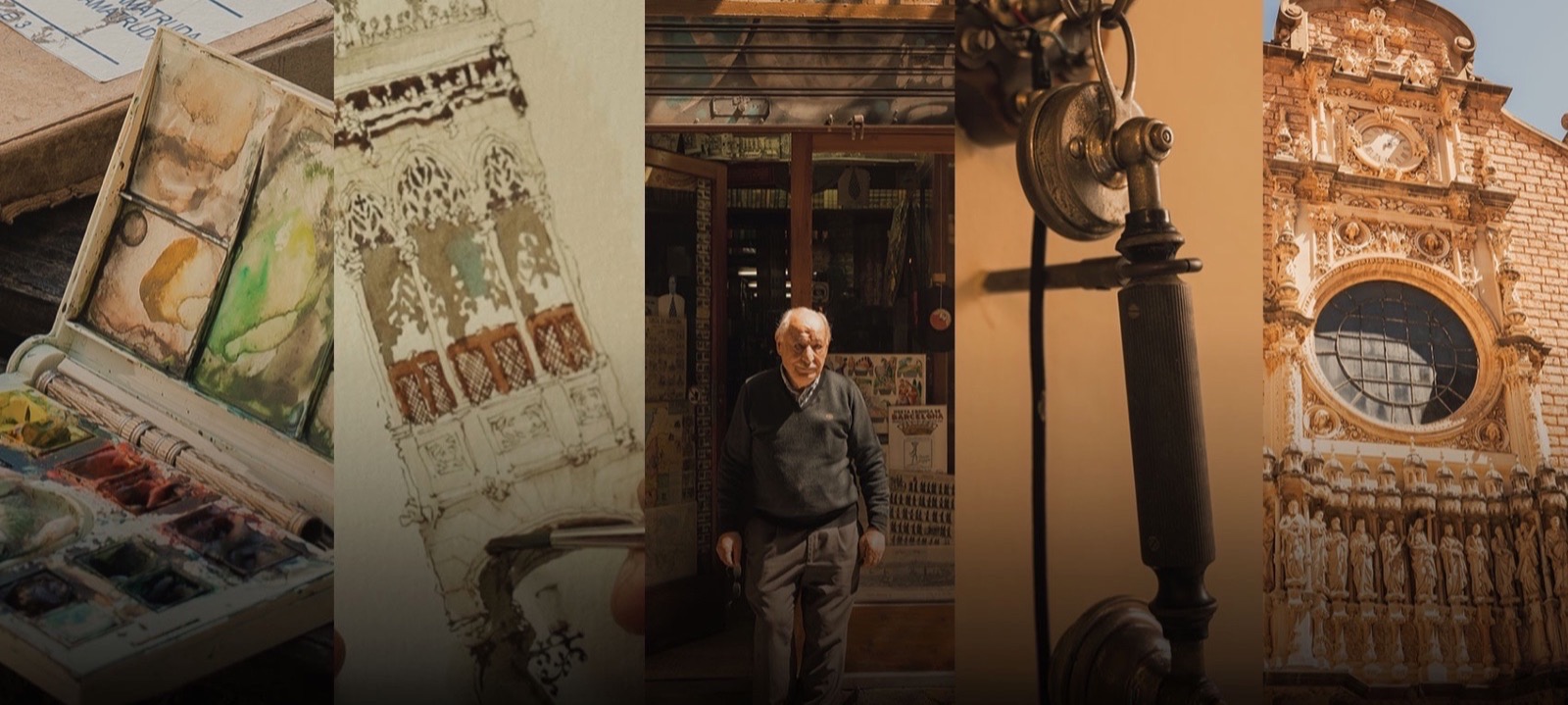
01
Landscape Watercolor Techniques
Controlling the water ratio in watercolor and managing the relationship between water control and large washes is essential to capture the nuanced variations of wet and dry details in natural landscapes.
02
Aquire Watercolor Techniques for Depicting Everyday Objects
By focusing on the details of everyday objects, one can explore the concept of capturing realism through the play of light and color.
03
Understand Principles of Perspective
By applying the principles of spatial perspective, explore the concept of depth in the objects in front of you, using yourself as the point of reference.
Through various perspective techniques, present each individual's viewpoint and perspective when observing a scene.
04
Explore the History of Architectural Aesthetics
Architectural philosophy originates from aesthetics.
Understanding the cultural and spiritual context of the history of architectural aesthetics enhances sensitivity towards architectural structures and historical emotions.
05
Depicting Everyday Life
The roots of painting stem from life itself.
By observing the surrounding environment, understanding the meaning and value of people and objects, one can then use painting as a medium to express their inner emotions.
06
Forster Asthetic Appreciation and Sensabilities
Finding urban aesthetics in the mundane aspects of everyday life involves looking at the city with a fresh perspective.
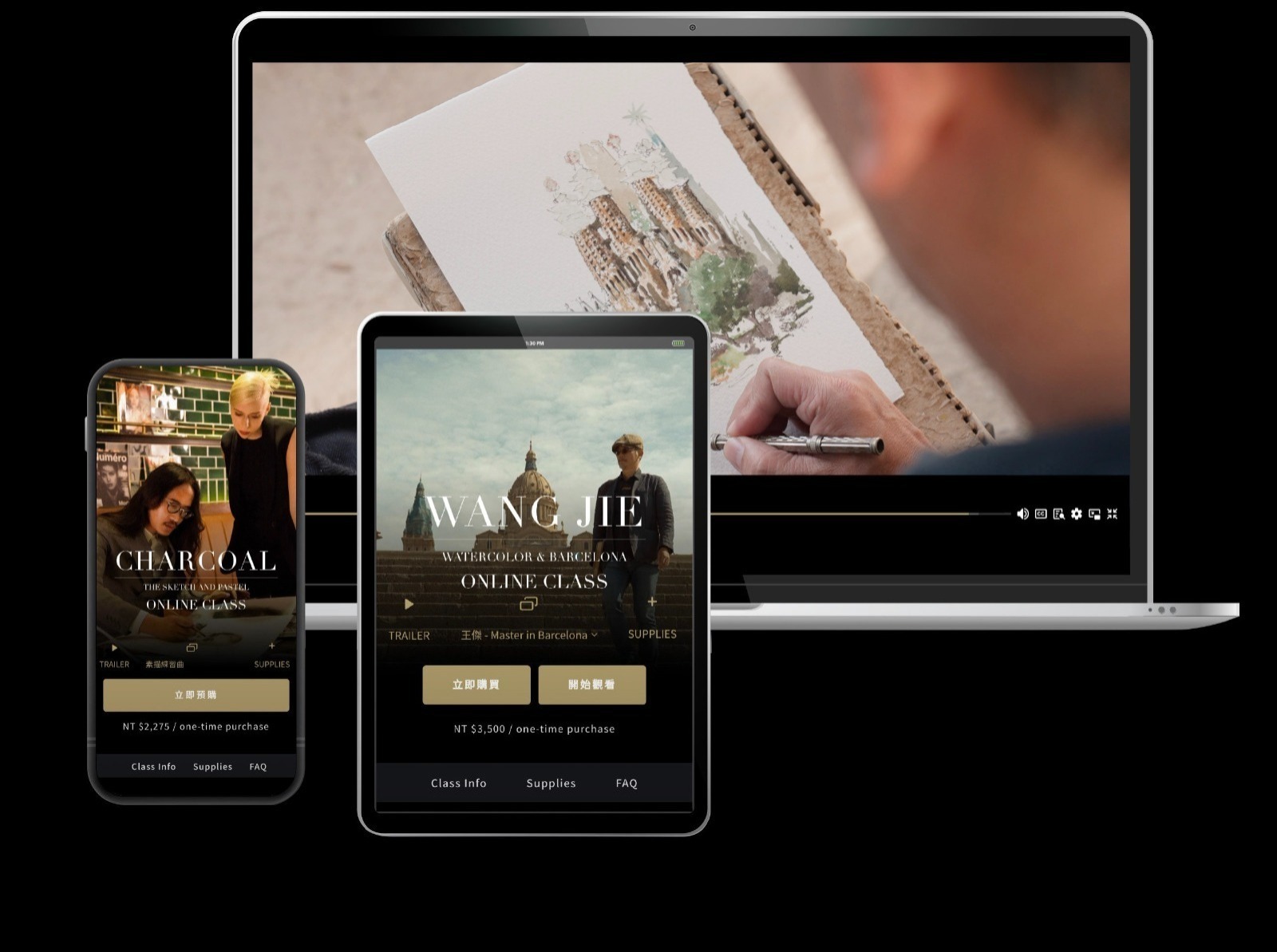
WATCH ANYTIME, ANYWHERE, ON ANY
DEVICE. UNLIMITED VIEWING.
No restrictions on devices, watch the course anytime, anywhere. Whether you prefer learning on your mobile phone on-the-go or enjoying the course on a computer's large screen, it caters to various devices and offers unlimited viewing.

NO INSPIRATION?
WATCH TV.
You can watch GARYTU Online Classes on various devices such as smart TVs, PlayStation, Xbox, Chromecast, Apple TV, Blu-ray players, and more.
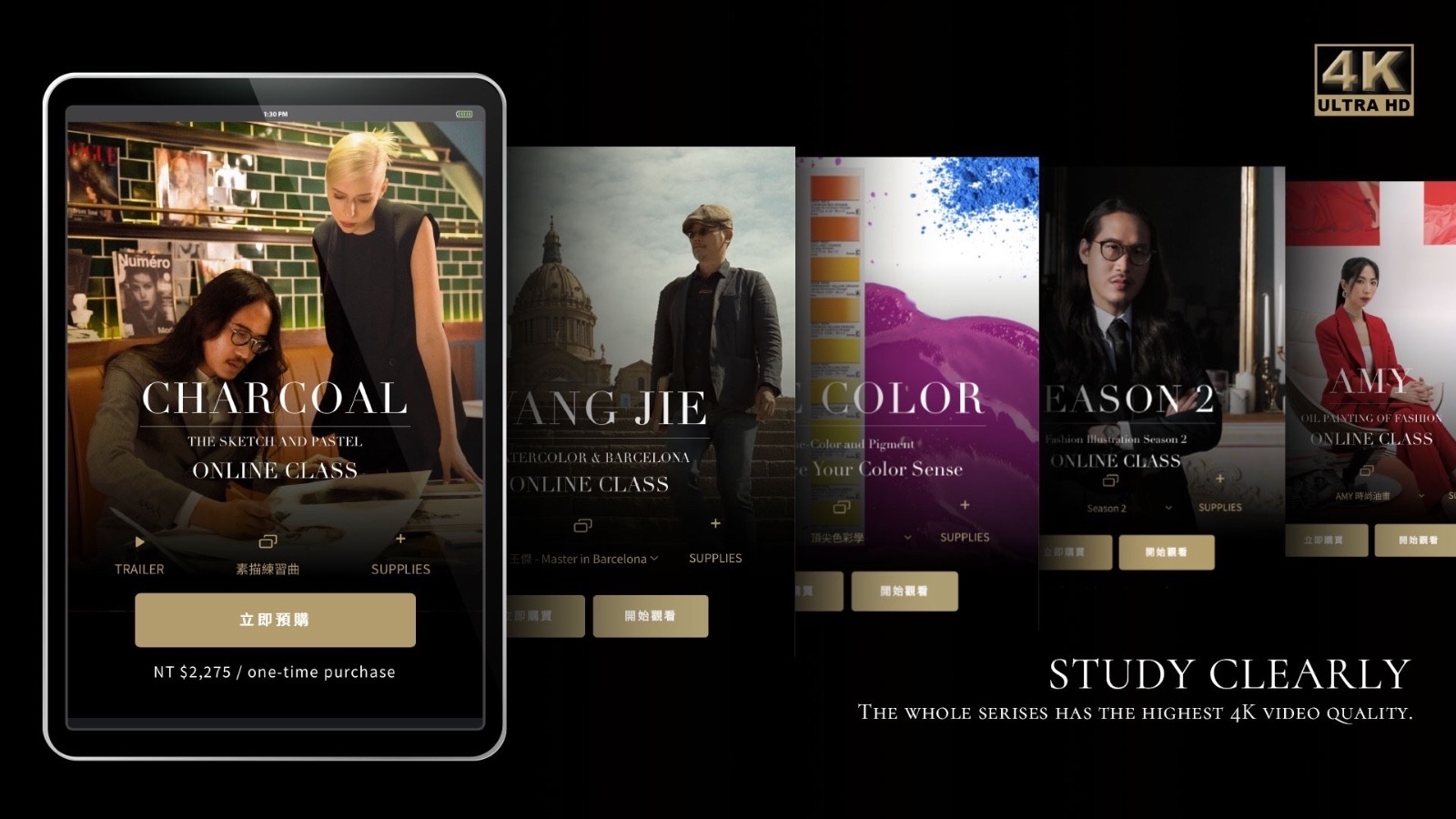
4K HIGH-DEFINITION, ONLINE AND
OFFLINE, SURPASSES EVERYTHING.
Worried about not being able to see the important details of your learning through the screen during the class? No need to worry! The entire range of GARYTU Online Classes offers you the highest 4K HD quality. With just one click to pause and zoom in, you can see the painting details more clearly. Providing you with a high-quality experience that feels like learning in person with the masters.
About Class
-
About Wang Jie
Wang Jie, born in Qidu,
Keelung, is a graduate of the Doctoral Program in Fine Arts and Painting at the University of Barcelona in Spain. He has opened a studio in Keelung's Miaokou area and works as a freelance columnist and illustrator. He has published three works: "Hand-drawn Spanish Moments," "Painter's Guide: A Small Trip in Keelung," and "Drawing Lessons on the Journey."
In fact, during his university years and while studying in Spain, Wang Jie primarily focused on abstract painting. None of his three published works reveal any traces of abstraction. It was only after returning to Taiwan that he transitioned into the realm of watercolor sketching.
Wang Jie's realistic landscape paintings feature spontaneous brushstrokes and vibrant colors that initially appear to belong to a Western style of painting. However, they actually contain the essence of traditional Chinese landscape painting. The combination of text and image complements each other in his works. When painting, he prefers to first use a black pen to outline from the center outward, employing light and heavy lines to depict the shapes. He then applies watercolor for coloring. While most watercolor paintings involve rendering large areas first and then adding details, Wang Jie takes the opposite approach. He starts coloring from the details and deliberately leaves white space to create a sense of transparency and freshness in the artwork.
Having experienced the joy of capturing travel memories through hand-drawn sketches in Spain, Wang Jie returned to his hometown of Keelung. With the curiosity of a tourist, he began to depict interesting corners of Keelung that were often overlooked. His book, "Painter's Guide: A Small Trip in Keelung," was voted as Keelung's representative book in 2010.
-
What can I learn in these lessons ?
Course Summary & Learning Objectives
Course Summary:
Developing skills in capturing architectural lines, shapes, and details through spatial perspective
Sketching human figures to capture expressions, features, and movements
Emphasizing the use of watercolors to create depth and transparency
Emphasizing the use of pen lines to depict intricate details
Learning various brushstroke techniques for watercolors and pens.Learning Objectives:
- Learn landscape watercolor techniques.
- Acquire watercolor techniques for depicting everyday objects.
- Understand the principles of perspective.
- Explore the history of architectural aesthetics.
- Use drawing and painting as a means to depict daily life.
- Foster aesthetic appreciation and sensibilities.
-
Who is suitable for this online course?
Anyone who is interested in watercolor and imitation architectural painting skills is welcome to join the "WANG JIE" online course. Cultivate a sense of beauty.
No age limit, no object limit. -
How many episodes of the course?
EP: 1~26
No limit to the number of times -
What should I prepare for the course?
You can purchase the necessary tools after the course starts and choose the ones that suit you best. The basic tools you will need include watercolor paints, a pen (such as a nib pen), watercolor brushes, watercolor paper, and a water reservoir brush. The price and brand of the tools are not restricted.
You can visit an art supply store to purchase the required tools for the course.
-
How many times can I watch the online course?
No period or number of times limits for watching the video after your purchase.
You may watch the videos in anytime, with any devices, such as mobile, tablet and PC.
General Questions
-
When will the online course start broadcasting?
Pre-order now and get ready for the course to go live on July 25th (Tuesday).
-
How much do the online course cost?
The original price for the course is 3,500 New Taiwan Dollars, and it includes a total of 26 episodes. Please refer to the official announcement for the most accurate pricing and course information.
Get Started
-
May I watch immediately after payment?
Payment will be processed now, and the first episode will be available upon the course launch. Subsequently, one episode will be released every week for a total of 26 lessons.
-
How can I log in when the course starts after purchasing the course?
For those who have purchased our course before, please click on the block on top right corner and choose Member.
After login to your account, please click "Online Class" and then click "Get Started" to begin your journey.
If the payment page still remains, the followings are some possible reasons and suggested solutions:
1. You haven't login before you click "Get Started" button.
2. Please remember your registed email and password.
3. If you use your Facebook account to make the purchase, please remain this state when you want to watch the video.
4. Make sure you use the same account to view the video. Avoid using the account which you haven't complete the payment.
5. Avoid using other people's email to register your account. -
I have made the payment, but I am unable to access the course and the order record shows unpaid.
The followings are some possible reasons:
1. If you pay by direct transfer, it takes about 1 day for confirmation.
2. If this situantion exists after you pay by third-party payment platform, such as ATM transfer or Ibon/Famiport etc, you will have to check whether you login to the correct account. Please login to the account you make your purchase.
3. Please click on the "Forget password" button to check your registed email as the password will be delivered to that mailbox. -
Why do I fail to reset password?
The system will send you a login password to the email address you registered with while you choose to reset your password.
Please use the password provided within the designated time frame to complete the login. Once logged in, you can click on "Member" to access the page, then click on "Edit Member Information" to modify your password.
Domestic Payment Questions
-
May I pay by credit card?
Yes, for those who live in Taiwan. We accept VISA、Mastercard、JCB and many other credit card service.
Line Pay
-
What to do if I fail to pay by credit card?
Don't worry, just place the order again and complete the payment process.
If you fail to pay many times, please check your internet connection and your card balance.
If you could not complete the purchase, please contact us with Line @vft0728y or e-mail.
We will contact you within 12-24 hours by text or phone. -
May I pay by direct transfer?
Yes, we accept ATM trasfer, wire trasfer and online bank transfer.
If you have any questions related to payment, please inquire through our Official LINE Account
Foreign Payment Questions
-
May I pay by credit card?
We accepts Paypal, Ecpay, Newebpay.
If you could not pay sucessfully, please contact us by pressing the Contact button and leave your information to wait for our response shortly.
Official LINE Account -
Why I failed to pay by credit card?
1. Don't forget to use your local credit card.
2. Please use Paypal to make the purchase. For more details, please see " What could I do if I keep failing to pay with credit card?".
3. Please contact us for assistance.
4. For payment from overseas, please write email to feyr5fly@hotmail.com and include your name/ nasionality/ mobile number. We will get to you as soon as possible.For those who are from Malaysia and Singapore, we are glad to annouce that we are on our progress to develop some payment methods, such as IPAY88 and APPLE PAY. Stay tuned to our website.
-
May I pay by direct transfer?
Yes, we accept ATM trasfer, wire trasfer and online bank transfer.
If you have any questions related to payment, please inquire through our Official LINE Account



